The A LMONDBURIAN



3 farewell, Jack Taylor (1932-2024) The editor
6 Jack Taylor: a tribute dave bush
8 Jack Taylor: my very dear friend graham cliffe
12 Jack Taylor: after-dinner speaker
14 a word from your chairman Walter raleigh
16 from the study ian rimmer
18 Membership andrew haigh
20 almondburians’ society calendar
21 spotted
22 annual general Meeting 2025
26 accounts 2023-24
27 executive officers 2025
30 annual dinner
34 founders’ day service
35 every picture tells a story
36 The history of fireworks rev ron lancaster Mbe
39 sudoku
40 crossword hérisson
41 The almondburian Poets
42 The huddersfield of Yesteryear…
44 …and Tomorrow
45 back to the drawing board roger sykes
46 a Yorkshireman in america charlie starkey
50 Meanwhile, back at the school
52 chocks away! We take to the air roger dowling
57 badminton/Tennis andrew haigh
58 golf: gothard cup 2025 robin Merchant
59 obituaries
A photograph by Dave Bush of the School House in winter . Opinions expressed by contributors to The Almondburian do not necessarily reflect the views of The Almondburians’ Society
(Opposite):
Editor: Roger Dowling
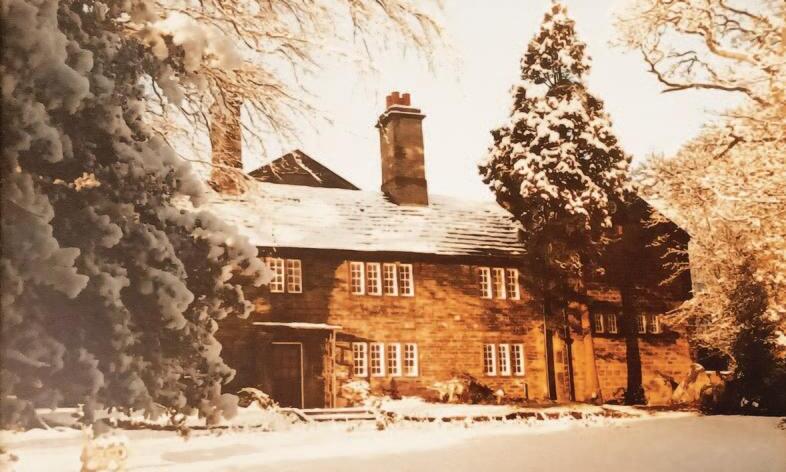
ll almondburians will be
saddened by the news that Jack Taylor, one of our
most supportive and re-
spected members, died on 2nd december. This
special issue of The Almondburian contains
tributes from colleagues who knew him
well and worked – and played – with him
over many years.
sadly, i never knew Jack as a teacher: he started at King James ’ s grammar school in 1959, the year i left. My own contact with him has therefore been exclusively in connection with almondburians’ society activities. born in oldham, he attended holme Valley grammar school and graduated with an external degree in zoology. his teacher training was at the institute of education in london and he then taught
briefly at a comprehensive school in coventry and at royds hall grammar school before being appointed to the position of head of biology at KJgs in 1959. he always claimed that his appointment was largely down to the fact that headmaster harry Taylor shared his love of cricket, and Jack soon became involved in coaching and house cricket activities. outside school, he played at Kirkburton cricket club for 25 years. he also had a 30-year acquaintance with the central YMca soccer team as a player and administrator.
longest serving teacher at King James ’ s grammar school, a record only surpassed by rev samuel brook, headmaster from 1727-71.
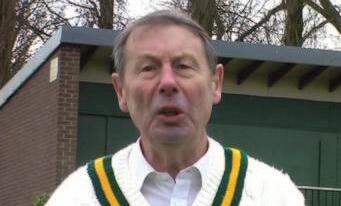
Jack was a superbly effective and wellliked teacher. at Jack’s funeral, graham cliffe (1959-66) explained that his popularity with the boys stemmed from the fact that they knew that at some point, during every lesson, he would make them laugh. bryan hopkinson (1967-74) recalls:
Jack Taylor: Where in the female is the sperm released? Hopkinson?
Hopkinson ( floundering): The fallopian tubes, sir?
Jack Taylor: That’s stretching it a bit... outside school life, Jack threw himself into a wide range of almondburians’ society activities. during the 1980s he played an influential role as chairman of the old almondburians’ society, at a time when the future of the school was in some doubt. he was a member of the old almondburians’ society executive committee and former chairman of the old almondburians cricket club, turning out to play regularly and later occasionally as an umpire.
Jack retired in 1997 and took great pride in the fact that he was the second
for me, Jack was an excellent source of reliable information about every aspect of life at KJgs and KJs: he had an excellent memory which he was lucky to retain to the end. in 2006 i interviewed him for the website* and as part of the chat we toured the school; he was an excellent and authoritative guide to the many building developments that had taken place since my own departure in 1959. in 2008, the old almondburians’ society decided to make an extended video about the history of the school to mark its 400th anniversary and Jack was the obvious choice as presenter†. We shot sequences around the school, including visits to his beloved cricket field in arkenley lane –where he obligingly donned his old cricket sweater in the interests of authenticity –and Woodsome hall where he managed a hole in 1 (albeit at a range of only three feet) to demonstrate the immediate success of the school’ s petitioners in achieving the letters Patent and charter in 1608. in the following pages, Dave Bush contributes a personal tribute to his close friend and colleague over many years (pages 6-7). Graham Cliffe ’ s eulogy, delivered at the funeral service, is on pages 8-11, and on pages 12-13 we record some of the many examples of his fine oratory.
*The interview with Jack Taylor is on our website at www.asoc.org.uk/audio3.php. †The video Floreat Schola - the story of an Historic Yorkshire School is on the website at www.asoc.org.uk./school.php.


i have always known that it would most
likely come to this but
i have dreaded it. The
chances were that i would be invited to write an obitu-
ary to Jack Taylor. it is an un-
doubted honour – yet dreaded for
two reasons. firstly it would mean that my dearest friend had died
and secondly that whatever i wrote
would be inadequate. as i begin my tribute, i have one
picture foremost in my mind. it’s a dull and darkening friday evening.
i am waiting at the old Kitchen en-
trance to have a lazy lift from roger l’amie or angela Melling who will
drop me off at foxglove road, a mere 20 minutes’ walk away. as i
wait, down the slope from the play-
ing fields comes Jack Taylor pound-
ing his way after a long run. how i
admire his strong will and dedica-
tion to fitness which kept him so
active in so many fields until late in life! a microcosm of the man.
Jack and i taught together at
King James ’ s for 35 years. he
started in 1959, two years before i,
and finished in 1997, the year after
my early retirement. We were al-
ways very close, epitomised when
his first wife, Joyce was dying of
cancer. during this time i learnt
the value of ‘companionable si-
lence’. We would meet in my room,
the three of us, Jack, dave gregson
and i. We would hold hands, dave
would lead with a prayer and si-
lence would ensue. i believe Jack
gained much strength and solace
from these occasions. i found them
very moving and binding.
such a contrast to the Jack as
most people will remember him.
he was a man so full of life – and
enormously humorous. The stories
about him are innumerable, often
centred around the biology lab. he
was known to leave the lab and re-
turn via the window. he would de-
tach the tube from the fire
extinguisher near the blackboard
and speak down it. it was, he ex-
plained, a direct line to the head-
master’s study.
Then there was the occasion
when secretary doreen hinchliffe
rang him to say that the head, alan
conley, was coming to see him.
Would Jack discreetly mention that his fly was undone? When alan left Jack rang her to confess that his courage had failed him. it never did on the football field. Jack’s defensive tactics were, shall
we say euphemistically, uncompro-
mising. anything above daisy
height was a legitimate target.
When refereeing, which he did into
his seventies, he adopted the same approach. “Play on” was his regular cry. it was said that if a player went
down with a broken leg, Jack would
say, “it’s only a flesh wound. Play on.”
despite his fastidious approach
to a healthy and law-abiding life
style – i can still picture him in the
school dining room cutting off
every bit of fat from his meat –
things did not always work out as
he would have liked. he had to
have a stent inserted, which an-
noyed him intensely. as a driver
who slowed almost to a stop even
to mount the speed humps in al-
mondbury village, he once re-
ceived a speeding fine. Judith, ithis
wife and rock, recounts that on opening the letter she thought he
was going to have a heart attack. recollections flood in. he always
used the same bowl for his break-
fast, banana and shredded Wheat. imagine his reaction on discovering that son, Jonathan had used it
the previous night for a curry. his basso profundo contribution to
our barber shop quartet was a delight, i can easily bring to mind his rendering of ‘Just a wearying for you’.
i could fill a whole magazine
with such memories but over and
above all it must be recognised
and recalled that Jack was an outstanding teacher. his iron disci-
pline, always tempered by good
humour, was appreciated by all. countless doctors, zoologists, biologists and dentists are indebted
to Jack for their successful careers, while the less academic
were never written off. The extra-
curricular scientific and Philatelic societies were his passion. in conclusion, i invite you to re-
capture your personal memories of this great man in a special way. i suggest you choose a dank, darkening, december day. stand on the top football field. stretch your
ears and your imagination.
There ’ s a real possibility you
will hear reverberating down the farnley Valley, “Play on!” l farnley lines will return in our July issue.
Former Almondburians’ Society chairman and close friend since childhood GRAHAM CLIFFE delivered the Eulogy at the funeral service at Park Wood Crematorium, Elland on 19th December 2024.

PreParing a eulogy is never
a straightforward exercise,
especially if the subject is
someone you've known for
almost 70 years. at different
times in his long and distinguished and
happy life, Jack Taylor was my hero, then
he was my teacher, then he was my team-
mate, and latterly, a dear friend.
in the mid-1950s, my late father, Joe cliffe,
was the team manager at huddersfield
YMca soccer team, and because nepotism
was rife in the YMca, i was appointed team
mascot. it was exciting, i was allowed to
run out with the team, at a time when the
sum total of my ambition in life was to play for that team. When i was older, the team
members were my heroes, all of them.
a very young Jack Taylor began to play when he was available. for a time, national service got in the way, and a brief period of teaching in coventry. it is said that occasionally the club secretary would write to Jack’s commanding officer, inviting him to give Jack a weekend pass if the YMca had
an important game it rarely worked. but as soon as he was permanently based in huddersfield, he became an integral part of a very successful team, and therefore very definitely one of my heroes. Jack was a strong and aggressive defender, but one who was capable of dis-
arming any referee who might think of calling him out for the occasional late tackle, by the simple expedient of helping his stricken opponent back to his feet, while saying at the same time, “oh sorry ref!” in that deep and cultured voice of his. his, you understand, was well before the days of yellow cards.
1959 was a notable year for Jack. That’s when he joined the staff at King James's grammar school, a school that he served faithfully for the next 38 years. at that time it was a small boys’ grammar school, and by coincidence i joined the school at the same time as he did. i was the nervous new boy, and my hero suddenly became my teacher. and in the formal atmosphere that prevailed in those days, all school-
masters had to be addressed as ‘sir’, so my hero became ‘sir’ for the next few years.
Jack was a very popular teacher. his main subject was biology, which he taught with a mixture of iron discipline and great hu-
mour. his lessons were eagerly anticipated by the boys. he was the most imitated schoolmaster in the school, and all impressions of him were affectionate ones. his popularity with the boys stemmed from the fact that they knew that at some point, during every lesson, he would make them
laugh. Those who knew Jack well will understand that the module on the reproductive
system of the rabbit was a wonderful source
of amusement when taught by Jack Taylor.
his performance – and it was a performance – was worthy of an experienced stage actor.
i well remember him setting us the task of sketching the reproductive system of the
rabbit, and all was deadly quiet as Jack
crept along the rows of boys, looking over
their shoulders to assess their efforts. until
the silence was suddenly shattered as Jack, seemingly taken aback by one boy's version of the subject, exclaimed, “hey lad, have you ever seen a rabbit with a penis like that?” The class was convulsed and it was
a couple of minutes before order could be restored.
however, whilst things were going very well at school, the early 1970s were to prove to be the hardest of times for Jack when his first wife, Joyce, became ill and died in 1973. it was, of course, a devastating blow for him and for Jonathan, neil and Michael.
it’s only in the last couple of years that Jack has expressed to me just how difficult
a time that was for him and for his sons,
and he told me how grateful he'd been for the support that he received at that time
from his colleagues, especially dave bush
and david gregson.
but life was just as difficult for Judith because at the beginning of 1974, her first
husband, gordon, died as a result of a tragic accident,
Outside his busy life as a teacher, Jack had a long association with Kirkburton Cricket Club. He is at the centre of the back row when they received the Sykes Cup in 1964.
then aged five years and three years re-
spectively. Judith relied heavily on the sup-
port from her parents at that time. she
lived with them for a time as she endeav-
oured to cope with their loss.
Jack and Judith already knew of each
other through a tenuous family link. both
were struggling with their grief and they had much in common. They shared their
experiences and eventually their friendship
deepened into a love that sustained them
through 48 years of married life.
They moved into a large house in outlane
when they were married in 1976. it was a
busy house, it was a busy life, with initially
five children between the ages of 16 and 6.
in their retirement years, Jack and Judith have had time to reflect and i know have
rightly felt a real sense of pride and satisfaction that all of their children have done well: they've prospered while holding down
positions of real responsibility and they now have children of their own. Jack and
Judith together have been wonderful role models for their children.
our years as teammates actually began whilst i was still at school, when i was
given my first game for the first team at

and she was left with two daughters, helen and alison, 9
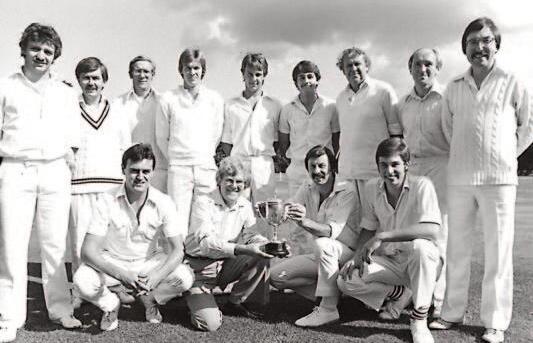
the YMca. suddenly playing alongside my
hero and my teacher, it raised the question
of course of what i was going to call him if i wanted him to pass the ball to me. i opted for ‘sir’, much to the amusement of several of our team members, until at half time he
took me gently to one side and explained how things were going to work in the future.
over the years we’ve played scores of games together, all around the huddersfield
area and in all sorts of conditions. one memorable game was played away at scapegoat hill united on a bitterly cold february day. for those not familiar with local geography, i should explain that scapegoat hill is just about the highest point in the Pennines outside huddersfield. it’s a forbidding
place, even on a warm summer's day. after changing for the match, we emerged from
the barn, which they laughingly referred to as a changing room, only to find that there was a really fierce wind. and as we kicked off, it started to hail. after about 30 minutes, one of our players could take no
more of these conditions and simply walked off in the direction of the barn, showing
Old Almondburians’ Cricket First XI: Jack is holding the divisional cup won in 1981. Graham Cliffe is on the back row, second left.
the first signs of hypo-
thermia. he did himself
no favours because it
was 400 yards back to
the barn. he was found at the end of the game,
shivering and soaking wet, in a corner of the
barn, quite unable to
remove his own kit and he needed help to
dress himself.
That incident was memorable because
in later years it provided the yardstick for
Jack Taylor's assessment of any player he thought might have a suspicious level of skill on the ball. coupled with a questionable
resolve to get stuck into the opposition
when it was necessary to do so. someone that Jack might describe as a bit of a fancy
dan’. he would look thoughtfully at such a player and then he would say, “You know, i’m not sure he could do it at scapegoat hill in february.“ for Jack on the field, there was no such thing as a lost cause. he always gave 100%.
and it was the same when he played cricket. The skills he ’d acquired as a young man at Kirkburton cricket club, playing in a high standard of cricket, were put to good use when he joined the old almondburians’ cricket club. he played as a mean, medium-paced bowler, capable of tying down and frustrating batsmen who were
trying to score quickly.
i remember him taking 7-19 in a game in which he played at the age of 68: quite
some performance. Whilst he had no great
aspirations as a batsman, he did on one oc-
casion strike two sixes in the final over of a
low-scoring cup match – and they proved
crucial to our success that day. and he also had an endearing habit of searching out
the tea ladies when we played in an away
game. he would always go to thank them
personally for the tea that they had prepared
– and they loved him for that. he could be a
smooth operator when he wanted. in short,
he was a great team-mate: someone you'd
always want on your side. he was hugely respected by opposing teams, who used to
ask after him, even long after he ’d retired.
Throughout the 70s, 80s and 90s, he ad-
vanced at school to the role of director of studies. The school had changed consider-
ably. it was much larger. girls had been ad-
mitted for the first time in the late 1970s. and at the end of his career, it was a co-
educational, comprehensive school. he was
still running a very successful department, helping young men and
women towards university entrance and rewarding careers beyond that. i think that today, in our national health service, there must be countless doctors, dentists, nurses, physios, paramedics, etc whose interest in the biological sciences was first stimulated in Jack Taylor's lab at King James school. about 15 years ago, in the course of my own work, i had to consider a report
by a working party set up by the royal college of
ophthalmologists to look into something called ‘shaken baby syndrome’, a type of child abuse. only the most eminent medical consultants are chosen to lead committees of that type. in this case, the chairman was a man called harry Willshaw, another one who began his professional journey in Jack
Taylor’s lab. in his later years after retire-
ment, Jack served as a school governor. he refereed and umpired school matches into his seventies. and he continued with his after-dinner speaking. his masterpiece, of course, was a story about the Two Ton Thames Trader travelling with two tons of toilet tissue from Tiverton to Totnes. To
my everlasting shame, i can’t remember
how that finished – but it was the antici-
pation of the story and the delivery that so entertained his audience.
Jack always kept himself fit as a younger
man, and it was frustrating for him when his love of walking was eventually curtailed. but his mind was always sharp. even recently, he was able to recall details of matches that we

played in together 55 years ago, including the names of teammates. and his comments on life in school became a little less guarded with the passage of time. and that made them all the more interesting and amusing for me. i’m going to miss him more than i can say. but whenever i think about him, it will always, always be with a
smile on my face. goodbye, dear friend.
rac onTeu r
No tribute to Jack Taylor could be complete without examples of the dry and often self-deprecating humour – delivered in stentorian tones – that made him a firstchoice speaker at Almondburian events over the years.
Your chairman has just said to me, “Would you like to speak now, or shall we
wait a little longer and let them continue enjoying themselves?”
“ “ “ “ “ ” ” ” ” ”
I remember when I made my debut with the Old Almondburians’ Soccer Club I was welcomed by Geoff Riley.
Geoff said: “We train on four evenings a week.”
I said: “Four evenings a week, that’s a lot, isn’t it Geoff ?”
He said: “Well, we usually have some form of entertainment after the training session. On Tuesday evening, we have a poker school.”
I said: “But I don’t play cards.”
He said: ”Well, on Wednesday evening, we have a boozer.”
I said: “I don’t drink all that much. “
He said: “On Thursday evening, we have a few girls in.”
I said: “I’m not interested in girls.”
He said: “You’re not gay, are you?”
I said: “Certainly not!”
He said: “Oh, well, there goes Friday night as well.”

it wasn’t all that long ago that dave bush’s mother said, “get up, you’re
going to be late for school, david”.
dave said, “i don’t like school, mother. “
his mother said, “i really think you ought to go, son. You are the deputy head.”
I do feel rather claustrophobic on the top table, surrounded as I am by lawyers. In fact, I feel distinctly uneasy. That's because I find most lawyers are like rhinos. They're short-sighted, they're thick-skinned, they're horny, and they're always ready to charge.
did you see the newsflash on TV earlier this evening? The person who hid lord lucan and shergar has been identified. Yes, it was dave bush. They were found in the Jessop house trophy room.
The house system still remains. in fenay, there are people out there who will know that there is no person allowed to say th
e's
thing wrong with defeat. The only person allowed to say that is nelson Mandela's chiropodist.
Graham [Cliffe] was mowing the square at Arkenley, and unfortunately the mower broke down.
He says: “My bloody mower’s broken. I know what I’ll do - I'll go over to Reg Carter’s [an Almondburian who lived across the road]. That’s what I’ll do. I’ll tell him: ‘My bloody mower’s broken down. And I’ll ask him if I can borrow his. That’s what I'll do.’ ”
But then he thought: “Well, what’s Reg going to say? Reg will say: “You’ve broken your lawnmower, have you, Graham? Then it’s highly likely you’re going to break mine. That’s what he'll say. “
So Graham went over to Reg’s and knocked on the door. When Reg came to the door. Graham looked him in the eyes and said: “You can stuff your bloody mower.”
Mr Chairman, you spring it on me this evening that you want a few minutes from me, then get off so we can get on with the real speeches. “Only speak for as long as you normally bat, which is never more than five minutes. “
in the very early days, i remember a young lad tripping along the corridor
and i said, “boy! What is your name?”
he said, “norman.“
i said, “norman what?”
he said, “norman Pearson.”
i said, “norman Pearson what?”
he said, “but i haven't got another name.”

i said, “When i speak to you, your name is norman Pearson sir. “
a few days later, same lad tripping down the same corridor. “boy!
“Where are you going?”
he said, “norman Pearson sir!”
it was reported to me that someone was smoking in the boys' toilets. So I went to investigate. I could see the cubicle with the blue haze rising above the cubicle door. I banged on the door.
I said, “Boy! Put that cigarette out. Come out and identify yourself.”
And a deeply resonant bass voice said, “I’m on the toilet. I’m one of the builders.“
I said, “I do beg your pardon. May I get you an ashtray?”

This is always an impor-
tant time for the society.
The agM, moved from Ja-
nuary to february this
year because of school clo-
sure caused by a heavy snowfall, allows
us to reflect on the success or otherwise of the society’s two major social events of the year, the friday founders’ day ser-
vice in all hallows’ and the annual dinner held in school. at the agM we also discussed the direction we want to take the society in the coming year.
as regards to the church service and dinner i can report that both took place
as scheduled and were a pleasure to attend. however, the relatively small number attending the dinner, fewer than 50 this year, inevitably raises the question of whether it is sustainable in its present form. This low attendance was not new. is the annual dinner sustainable in its present form? over the last few years fewer and fewer have made the event a priority in their social calendar.
We have not been alone as a society in seeing this decline in attendance at formal dinners. in huddersfield numerous sporting organisations have stopped holding dinners, replacing them with less formal ‘Presentation events’. it would appear the younger generation do not care for these
dinners and are voting with their feet. This is one of the issues we addressed at the agM.
for what it is worth, my view is we should try holding the event as a lunchtime event. The advantages of this are that members could have a look round the grounds of the school as well as the usual indoor tours. an event at this time of day would allow and encourage more participation by school students and staff, which would be a wonderful addition to the event. it would also, of course, no longer need us to turn out in the dark on a cold and wet november evening. next year, 2026, marks the golden anniversary of the school in its present form as a comprehensive. Perhaps this celebration might be an appropriate time to move the dinner/lunch event to
July rather than november. This would
spread the main events of the society
Is the Annual Dinner sustainable in its present form?
from both being in the au-
tumn Term yet still allow us to celebrate founders’ day at the traditional time in november. i am also as-
sured, if the event took
place near the end of term
in July more staff would be
likely to attend, something
all members of the society, would wel-
come
however, they are simply my thoughts
and remember it is Your society. so
please let us have your views by complet-
ing the panel below and returning it to
us, or by submitting the same form on the website at www.asoc.org/uk/dinnerquestionnaire.php.
as i said at the beginning, January gives us an ideal opportunity to focus on what we feel are the priorities of the so-
ciety this year. i have a number i feel we should press on with:
l We need to continue the recent excellent collaborative work with school staff. at little cost much progress has been made.
l We need to develop our presence at Presentation evenings and support for prizes.
l We need to engage further with rob clegg at the West Yorkshire archive ser-
vice. now the archives have been catalogued we need to move to get them digitised so we can all access them from
our homes. and finally, it would be remiss of me to
end this column without mention of the
passing of my dear friend and colleague, Jack Taylor. in the preceding pages of the magazine you will have seen tributes
to this wonderful man but i feel i’d like
to say a few further words.
Working with Jack for almost 30 years
was both a delight and a learning experi-
ence. his presence at any event made
everyone feel safe and comfortable. We
all watched and admired how he quietly
took control of situations where there
might be dozens of children. he was
loved by everyone. i never heard anyone
say a bad word about him, children, staff
or parents. he will be remembered for
his professionalism but also his brilliant
sense of humour. i knew no-one like him.
he will be missed by all and the world is
a poorer place without him.
May i take this opportunity to send my
sincere condolences to Judith and all the
family.
Your Committee is concerned that the numbers attending the Annual Dinner are falling year by year, and we are approaching the point where it could become unviable in financial terms. It has also been suggested that Dinners in general have perhaps become less fashionable these days, and that there is a tend towards more informal occasions. We would like you views, please.
We believe there are four options:
1. Continue with the present Annual Dinner in November.
2. Continue to hold the event in November but as a less formal daytime Luncheon.
3. Move the Annual Dinner from November to July
4. Hold a Luncheon in July.
Your Committee requests members’ view on these four options. Simply tick one or more boxes of your choice and post this form to The Almondburian, Orchard House, Oughtrington Lane, Lymm WA13 0RD. Alternatively, your can complete the same form online at www.asoc.org.uk/dinnerquestionnaire.php or simply text 1, 2, 3 or 4 to 07815601447
The 2024 GCSE results show an upward pattern with really positive strides in certain areas, though Attainment figures nationally have dropped because of realignment of grades with pre-Covid figures. But here at KJS things are definitely on the up.

MY contributions entitled
From the Study could, per-
haps, lead one to the conclusion that my role exists entirely in that space. and whilst much of my work does, indeed, take place in my office, there is a real
need for me to get out and around school
to get a true sense of what things are like ‘on the front line’. being on duty at lunchtime in the dining hall and playing
my part in the senior team ‘on call’ rota
every day go a little towards being visible
to students and staff, and towards me
getting that temperature check of how
things are around school. in previous roles, in previous schools, i recall sometimes viewing senior staff as “sitting in
their ivory towers”, cut off from ‘the real
world’ when frustrations about how
school was functioning spilled over for those of us doing ‘the real work’ teaching children in classrooms. interestingly, i dis-
covered that the idea of a tower of ivory became popular thanks to the
King James bible (1611), where the
song of solomon says “thy neck is as a
tower of ivory”.
but when i am otherwise occupied in
administrative matters, as is increasingly the role of headteachers these days,
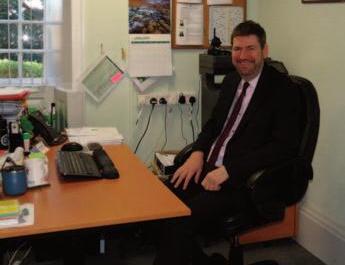
some of that time is spent in meetings with colleagues on what one might describe as educational issues and some of it on business-related matters. for the school is, of course, a business. a business that, like any other, must be a ‘going concern’. our books are audited annually to check for financial impropriety, but also to see if we are managing our budget and planning for the future effectively, maintaining our facilities and premises and generally getting best value for the public money to which we are entrusted. of course, at King James ’ s school, i am dependent for much of that work on our school business Manager (sbM), Alison Hardwick, who after more than 21 years’ service will be leaving us in february. as sbM, alison is a senior associate member of staff who manages the administrative and financial aspects of the school. her responsibilities,
Photos: Jenny Sanderson

which she has fulfilled diligently over the
years, include
l advising me and the governors on our
financial position and helping inform fu-
ture financial policy;
l managing the school’ s budget, includ-
ing forecasting income and expenditure,
monitoring financial performance, and
making strategic decisions;
l procuring external services, such as
cleaning and catering, and negotiating
contracts with external service pro-
viders;
l having oversight of facilities and
premises, and health and safety.
alison also played a central part in the recent expansion of the school site. all
in all, she has worked tirelessly over the
years to make King James ’ s school a better place.
budgets are, of course, a troubling issue for most schools, and arguably most public sector institutions, at the
moment. according to the institute for fiscal studies (ifs) report ‘School spending in England: a guide to the debate during the 2024 general election’ published in June this year:
‘…between 2010 and 2019, total school spending in England rose by 1% in real terms. But since total pupil numbers grew by 11 % over this period, school spending per pupil fell by 9%.’
The report also states:
‘School costs have grown rapidly in recent years and by more than overall inflation. This reflects increases in staff pay and rising food and energy costs. It is estimated that schools’ costs will grow by 4 % in 2024 ( compared with
economy - wide in fl ation of 1 % ) . This could leave the purchasing power of school budgets about 4% lower than in 2010. Given that staffing costs represent more than 80% of school spending, savings can also only really be delivered with reductions in the workforce and/or school closures.’
With regard to previously highlighted staffing issues, the report states:
Average teacher pay across the UK in 2024 is expected to be over 6% lower in real terms than in 2010, and is at a similar level in real terms to that seen in 2001 . The decline is concentrated among more experienced teachers, whose salaries have fallen 11% in real terms (new recruits have seen little realterms change in pay). In contrast, average earnings are due to be about 6% higher in 2024 than in 2010, and about 18% higher than in 2001. These declines in teacher pay relative to average earnings may help to explain why teacher recruit-

since the previous issue of The Almondburian was published, we have been pleased to welcome two new members to the society:
Michael D. Walker (1961-63) left King James ’ s in 1963 to settle in australia and now lives in Margaret river, Western australia.
Richard Beverley (1978-83), now resi-
ment is significantly behind targets and why 1 in 10 teachers leave the state sector each year.
and finally, we have the buildings. The ifs conclude that:
‘Capital spending on school buildings is low in historical terms. The three-year average up to 2023–24 is about 25% lower in real terms than the three-year average up to 2008–09. Spending on school maintenance and repairs is also low compared with need, with the government having allocated about 40% less than its own assessments of how much is needed to ensure school buildings are in a fit state of repair.’
and with an inbox like that, no wonder alison is retiring! but those are the everpresent challenges we face, whilst simultaneously endeavouring to provide the highest quality teaching and pastoral care possible. a “happy new Year” it may be, but it’s “same old problems” too!
dent in romsey, hampshire. richard joined the ordnance survey as a surveyor in 1984. after training in southampton, he joined the local field office near fareham. in 1996 he moved to the ordnance survey head office to take up a contract Manager role, which then led to re-training to be a Project Manager, spending just over one year as a Project Manager at the cabinet office in london. in 2017, richard joined the
office for national statistics (ons) to help project manage the 2021 census
and he is now working on a cross-government data programme for the ons.
We have also been pleased to welcome back a lapsed member of the society: David J Chambers (1963-69), resident in Preston. over the same period, we have been very saddened to learn of the deaths in october, 2024, of Prof Colin Robson (1946-53),
resident in bath and on 2nd december, 2024, of Jack Taylor (staff, 1959-97), resident in greetland. obituaries for both appear elsewhere in this issue of The Almondburia n. subscriptions for 2024-2025 remain unchanged at £10.00 per annum (£20.00 per annum for overseas members who receive a hard copy of The Almondburian by mail, rather than electronically) and fell due on 1st september, 2024. The vast majority of our 440 members now pay their subscription by standing order. Thank you to those who have already paid their subscriptions but, of the 30-odd members who do not pay by standing order, there are still 20 who haven’t yet made their subscription payment for this year. Those members will receive a letter and subscription form with this issue of The Almondburian and we would ask you to send your payment without delay. it does make life much easier if you pay by standing order, so if you can complete
the standing order mandate on the subscription form and return it in the envelope provided, that would be even better! alternatively, you may renew online, using PayPal or a debit or credit card, by visiting www.oas.org.uk/membership.php.
Costs particularly postage, continue to increase, so subscriptions will have to rise from September 2025
costs do, of course,
continue to increase,
particularly postage
costs and this year is the 17th consecutive year in which the subscription rate has re-
mained unchanged at £10.00. You will see from the minutes of the annual general
Meeting elsewhere in this issue that the difficult decision
was taken to increase the subscription
rate to £15.00 per annum with effect
from september, 2025 (£25.00 per
annum for overseas members who re-
ceive a hard copy of The Almondburian
by mail, rather than electronically).
Members will surely agree that this
still represents excellent value for
money and we would be grateful if you would contact your bank to update your standing order ready for the next
payment in september. alternatively, you can complete the new standing
order mandate enclosed herewith.
finally, if you have friends from
school who are not currently members
of the society, then why not encourage
them to join? Where else these days can
you receive a copy of a fantastic maga-
zine three times per year for such a tiny outlay?
The annual Almondburians’ Society Quiz will be held in the upstairs room at The Woolpack, Almondbury, on Tuesday, 13th May, at 7.00 pm for a 7.30 pm prompt start. (Plese contact Keith Crawshaw for confirmation of this date and to register your interest).
The Gothard Cup will be played on Sunday, 29th June at Woodsome Hall from 2:30 p.m. The competition will be followed by dinner and the presentation of prizes. For further details, please contact Robin Merchant: robin.merchant@talktalk.net. (See page 58).
Friday, 21st November 2025 (details to be announced).
This year’s Annual Dinner will be held on Saturday, 22nd November 2025. Consideration is being given to holding a Luncheon, rather than a Dinner, on the same date and feedback on the idea is requested from members (see page 15). A decision will then be made and full details, together with an application form for tickets, will appear in the July issue of The Almondburian.
Our monthly meetings are held at 6.00 pm in the ODH at School, with a Zoom link for those unable to attend in person. Any member of the Society who would like to attend one of these meetings will be made most welcome on the following dates:
Monday, 3rd March 2025
Monday, 12th May 2025
Monday, 2nd June 2025
Monday, 7th July 2025
Monday, 1st September 2025
Monday, 6th October 2025
Monday, 3rd November 2025
Monday, 1st December 2025
Please e-mail the secretary at andrew.haigh@asoc.org.uk to request an agenda, the minutes of the previous meeting and any other documents.

The Zoom link for all meetings is:
https://us06web.zoom.us/j/4728049696?
Meeting ID: 472 04 9696
Passcode: BsJua1
You can quickly access the Zoom page using the QR code shown on the left and entering the Passcode BsJua1.


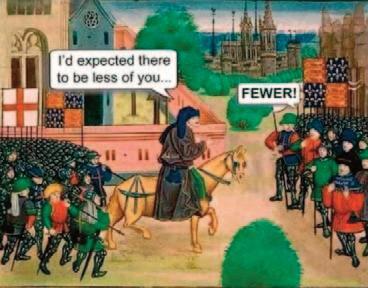

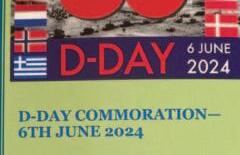

l The Yorkshire Post reported that a second reading of Animal Welfare (Import of Dogs, Cats and Ferrets) Bill on 29 November 2024 had taken priority over a debate on the situation in Palestine.


Spotters: Alan Bush, Keith Crawshaw, James Clayton, Roger Dowling, Have you spotted anything in print or on social media that has amused you or given you food for thought? If it’s worth sharing, send it to us: spotters@asoc.org.uk.
The Annual General Meeting of the Society should have been held in the ODH at School and also online by Zoom on Monday, 6th January 2025, at 6.00 pm. However, due to snow, it was postponed until Monday, 3rd February at 6.00 p.m.
Walter Raleigh was in the chair and Ian Rimmer, Richard Taylor, Mike Powner, Graeme Carby, Keith Crawshaw and Andrew Haigh were in attendance, with Roger Dowling, Graeme Milnes and John Sharp joining online.
Apologies for absence were received from Peter Warry, who had a meeting with the Archbishop of York and members of the General Synod of the Church of England, which took precedence.
Minutes of the Annual General Meeting held on Monday, 8th January, 2024
The Minutes were read and approved and there were no matters arising.
The Chairman proposed that the Principal should be invited to continue as President of the Society for 2025 and Ian Rimmer was re-elected unanimously.
President’s Remarks
Ian Rimmer thanked the meeting and spoke about the current situation in School, noting that an Ofsted inspection is looming. King James’s is now the only school left in Kirklees which was last inspected before Covid and hasn’t been since,
so an inspection is definitely imminent. A telephone call will be received around 9:30 on a Monday morning and the first thing they will ask is what has changed since November, 2019 and what is being focussed on. For us, quite a lot has changed: Covid, the closure of Almondbury Community School and the integration of their pupils, the building of a new classroom block, the fact that we are now within our own catchment area and the fact that 20% of our students are now in the bottom 20% of deprivation nationally. Covid has impacted families a lot and even now, four years on, children are less communicative and less literate than they should be. An increasing number of our students have English as an additional language, due to the number of refugees; there are now 27 different first languages spoken in School. Our community has changed and so we must build a School to serve it. However, we do also push the history and tradition of the school, because a lot of parents like it.
The Chairman thanked Ian for his really illuminating remarks.
Walter Raleigh noted that 2024 has been massively important. We continued with the usual events, which were all very enjoyable. The Heritage Open Day goes from strength to strength. The Annual Dinner was very enjoyable, although the numbers attending were disappointing. However, the real event of 2024 was the decision to change the name of the Society for publicity purposes.
So, what of 2025? Can we continue the closer working relationship with the School? Should the Annual Dinner become a luncheon? Can we become more involved with Presentation Evening and the donation of prizes? It would be nice if those who sponsor a prize came to present it. We also need to pursue the digitisation of the archive and we really must get our database updated with the younger pupils. Although there is a lot to do, do we need to continue to meet monthly, or could meetings be bi-monthly?
Finally, the Chairman thanked all the elected members of the committee, particularly our Secretary, Andrew Haigh; Treasurer, Keith Crawshaw; Media Editor, Roger Dowling and Chaplain, Graeme Carby.
Roger Dowling noted that we do need an archivist. He also asked if the Annual Dinner should become a luncheon in July. The Chairman said that he would prefer to change slowly and stick with November, since Gary Croft is already getting his year together for then. Keith Crawshaw felt that it would be quite difficult to change to July for this year, since it has an impact on the School. Richard Taylor said that he is implacably opposed to changing the Annual Dinner, but we do have a history of events in July, so we could try that in addition to the Annual Dinner. Mike Powner commented that, if we have to make a decision this evening for editorial reasons, then we can’t be pushed into such a major decision. He felt that we should stick with the usual date in November, perhaps a luncheon, but we can decide that detail later. He noted that we are, after all, celebrating the foundation of the School, so it is important to mark that date. Keith Crawshaw reminded the meet-
ing that this is an AGM and said that, if we are not moving the date, then we can discuss the merits of a luncheon or dinner later. John Sharp said that he brought this up a year ago, prompted by year groups organising social events outside the Dinner. It’s too early to make a drastic move today, but we should float the idea in the magazine and see what the reaction is, just as we did with the name change. Roger Dowling said that he would support that; July this year is not viable, but we can keep our options open for luncheon or dinner in November. Graeme Milnes sdmitted that not many from his year come to the dinner, but he said that he would support an event in July next year to mark the fiftieth anniversary of the School becoming Comprehensive, whilst keeping the Annual Dinner as well.
Keith Crawshaw presented the accounts for the financial year ended 31st August, 2024, pointing out that he had added the sponsorship of the Senior Student books into the accounts since he presented the draft accounts at the December committee meeting. He noted that subscription income has fallen by £255, although we do have more income from the interest on our accounts. We had a surplus on the Annual Dinner of £280. Sales were one Society tie and six copies of No Beating About the Bush. We paid £100 for Founders’ Day expenses. The cost of the magazine has increased by £280, largely due to the cost of postage increasing from £1,549 to £1,759. We had £8,900 in the bank at the year end, compared to £9,100 the previous year. He observed that he always compares the cost of the magazine as a proportion of subscription income and this year the
cost of the magazine has increased from 78% of subscription income to 89%.
Andrew Haigh reported that since the last A.G.M. we have recruited eleven new members but, sadly, six members have passed away. We have also lost a few members who didn’t renew their subscription for whatever reason, so membership currently stands at 439, of whom twenty are in arrears for the current year, down from thirty-two in September.
Commencing 1st September, 2025: Keith Crawshaw noted that every time we have increased the subscription rate in the past, it has roughly doubled, from £1 to £2, then to £5, then to £10. At the last meeting there were suggestions that we should increase it for next year to either £15 or £20. We have always tended to absorb losses for as long as possible and we are not losing money yet, so we could leave it another year. We know from past experience that not all members change their standing order straight away and we do lose some members when the subscription rate changes. We could double it again and increase it to £20, but that is a very large increase. Roger currently produces an excellent magazine, which makes the membership very good value for money, but what happens if Roger retires? Perhaps £15 is a happy medium.
Mike Powner proposed increasing the subscription to £20, since that would create an additional pot of money to help the School and he couldn’t imagine that too many people would baulk at £20.
Graeme Milnes noted that the Treasurer had proposed an increase to £15 at the De-
cember committee meeting, so he felt that we should vote on that first. The proposal that the subscription rate for 2025-26 should be £15 (£25 for overseas members who take the magazine by post) was carried by a majority of 6:2.
Mike Powner asked that we should emphasise that a higher amount can be paid if desired. The Secretary thought this was a good idea, since some members already do pay more than the current subscription. It was also felt that we could emphasise the option for anyone, not just overseas members, to receive the magazine by email.
Walter Raleigh agreed to continue as Chairman for 2025 and was re-elected unanimously.
Andrew Haigh had submitted his resignation as Secretary to the Chairman two months prior to the meeting, but he was invited to continue. He was reluctant to do so, but did admit to feeling that he was letting down his long-term colleague, Keith Crawshaw and something that Jonathan Taylor had said to him after Jack Taylor’s funeral had also given him further food for thought. He therefore agreed to continue as Honorary Secretary for the time being.
Keith Crawshaw agreed to continue as Treasurer, subject to what he had said at the December committee meeting. Over the years, most of the things we have done, he has fully agreed with. However, the idea of having a pot of money to support the School is something that he doesn’t agree with. According to our Rules, one of our objectives is to provide assistance for the School including, where appropriate, financial when approved by the committee. We are not here to raise funds for the
school. The Foundation is there to provide things which are nice to have and is far better placed to do so. He thinks that we should be supporting things related to the archive and history of the School. It’s good to keep funds to support bigger projects, such as the Specialist Science College bid or the Big Tree Project, which we had money available to underwrite. Of the recent expenditure, the Senior Student books were spot-on, the injection moulding machine was 50:50, but he felt that an annual software licence is definitely not appropriate. It’s a personal opinion, but if he doesn’t agree with financial decisions, then that would make his position as Treasurer untenable. At the moment, he said that he will continue but, given that the landscape is changing, he may not feel able to in future.
The other Officers were then re-elected or elected as follows:
Media Editor Roger Dowling
Assistant Richard Teale
Media Editor
Ordinary Martyn Hicks
Committee Graeme Milnes
Members Michael Powner
Dawn Smart
John Sharp (proposed by Andrew Haigh)
Ian Platt (proposed by Richard Taylor)
Chaplain Rev Graeme Carby
Representatives Abbi Terry of the School Liz Atkinson
Badminton Andrew Haigh
Section
Representative
Golf Section Robin Merchant
Representative
Badminton Andrew Haigh
Representative
Keith Crawshaw suggested that we should amend the rules to reflect the new trading name of The Almondburians’ Society. He proposed that Rule 1 should be amended to read: The name of the organisation shall be “The Old Almondburians’ Society” and in these Rules it is referred to as “the Society.” For marketing, promotional and operational purposes, the organisation shall be known simply as The Almondburians’ Society. This was agreed.
The Secretary was uncomfortable with this, since the membership hadn’t been notified of a special resolution and no proxy form had been circulated. Under Rule 11(e) only ordinary resolutions can be carried by a show of hands, whilst special resolutions (including those to amend the Rules or for dissolution) shall be decided by ballot and carried on a two-thirds majority of those present and voting by proxy.
The Secretary asked that the date and venue be fixed for the next meeting of the Executive Committee. The first Monday in March would be the norm and Monday, 3rd March in the ODH at School and via Zoom was agreed.
The meeting closed at 8.39 pm.
Signed A M Haigh, P W Raleigh, Secretary Chairman
President Ian Rimmer King James’s School
Chairman Walter Raleigh 15 Thorpe Lane
Work Telephone: (01484) 412990 e-mail: staff.irimmer@kingjames.school
Home Telephone: (01484) 308452
Almondbury e-mail: walter.raleigh@asoc.org.uk
Huddersfield
Yorkshire
HD5 8TA
Vice-Chairman (Vacant)
Hon Secretary Andrew M. Haigh 2 Arkenley Lane Home Telephone: (01484) 432105
Almondbury Mobile Telephone: 07770 220733
Huddersfield Work Telephone: (01484) 400032
Yorkshire Facsimile:(01484) 469567
HD4 6SQ e-mail: andrew.haigh@asoc.org.uk
Hon Treasurer Keith Crawshaw 5 Benomley Drive
Home Telephone: (01484) 533658
Almondbury e-mail: keith.crawshaw@asoc.org.uk
Huddersfield
Yorkshire
HD5 8LX
Media Editor Roger Dowling Orchard House
Home Telephone: (01925) 756390
Oughtrington Lane Mobile Telephone: 07815 601447
Lymm e-mail: roger.dowling@asoc.org.uk
Cheshire WA13 0RD
Assistant Richard Teale The Sycamores Mobile Telephone: 07810 313315
Media Editor 239 Huddersfield Road e-mail: richard.teale@asoc.org.uk
Thongsbridge
Holmfirth
Yorkshire
HD9 3TF
Ordinary Martyn Hicks 12 Gernhill Avenue
Home Telephone: (01484) 539409
Committee Fixby e-mail: martyn.hicks@asoc.org.uk
Members
Huddersfield
Yorkshire
HD2 2HR
Graeme Milnes Rhiwbina
Home Telephone: 02920 627553
Cardiff e-mail: graeme.milnes@asoc.org.uk
Glamorgan
CF14 6NB
Ian Platt 15 Cross Lane
Home Telephone: (01484) 603453
Stocksmoor e-mail: ian.platt@asoc.org.uk
Huddersfield
HD4 6XH
Michael Powner 45 The Fairway
Home Telephone: (01484) 423365
Fixby e-mail: mike.powner@asoc.org.uk
Huddersfield
HD2 2HU
Dawn Smart 8 High Seat Hill
Mobile Telephone: 07824 881132
Lazonby dawn.smart@asoc.org.uk
Penrith
CA10 1AW
John Sharp 8 Adams Bottom
Home Telephone: (01525) 373728
Leighton Buzzard e-mail: john.sharp@asoc.org.uk
Bedfordshire
LU7 3HZ
Chaplain Graeme Carby 10 Rectory Drive
Home Telephone: (01484) 302252
Kirkheaton e-mail: graeme.carby@asoc.org.uk
Huddersfield
Yorkshire
HD5 0JT
Represent- Abbi Terry King James’s School
Work Telephone: (01484) 412990 ative of the e-mail: staff.aterry@kingjames.school School
Liz Atkinson King James’s School
Work Telephone: (01484) 412990 e-mail: staff.eatkinson@kingjames.school
Head Boy Joshua Tiplady King James’s School
Head Girl Tarleen Aujla King James’s School
Badminton Andrew M Haigh 2 Arkenley Lane
Section
Almondbury
Huddersfield
Home Telephone: (01484) 432105
Mobile Telephone: 07770 220733
Work Telephone: (01484) 400032
Yorkshire Facsimile: (01484) 469567
HD4 6SQ
Golf Section Robin E Merchant 26 Jagger Hill
e-mail: andrew.haigh@asoc.org.uk
Mobile Telephone: 07933 200475
Kirkheaton e-mail: robin.merchant@asoc.org.uk
Huddersfield
Yorkshire
HD5 0RA
Tennis Section Andrew M. Haigh 2 Arkenley Lane
Almondbury
Huddersfield
Home Telephone: (01484) 432105
Mobile Telephone: 07770 220733
Work Telephone: (01484) 400032
Yorkshire Facsimile: (01484) 469567
HD4 6SQ
Independent Alan Swift Examiner
Vice-Presidents Ken G. Shaw J. Andrew Ward
e-mail: andrew.haigh@asoc.org.uk
Richard J. Green
Keith Crawshaw Paul Balderstone J. Richard Taylor
John M. Drewery James N. Taylor J. Amanda Taylor
Malcolm J. Taylor
David A. Bush
Graham Cliffe
Emily Murphy
Bryan Hopkinson Patrick O’Brien
Nicky Briggs
Robert Lamb
Roger Dowling
David Gary Croft
Robert Williams
Nicky Murphy
Andrew Haigh
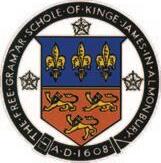
Saturday, 23rd November 2024
he number of Almondburians attending the dinner this year was rather disappointing, especially considering that Hugh Lawson and Richard Taylor had done a sterling job in gathering together ten members of the Class of 1954 to mark seventy years since they entered the School. However, the dinner was certainly a success and I heard nothing but compliments regarding the meal and the speakers, so the occasion must have been enjoyed by everyone there.
Those attending the dinner spanned a period of seventy-three years, from those who entered the school in 1951 to current students and staff in 2024. Unusually, no-one had travelled from overseas this year, so the prize for the furthest travelled goes to Prof. Robin Leake, who travelled from Glasgow to join the Class of 1954 reunion.
On arrival there was music provided by Doran Kane, a current pupil at the School. Tours of the School, conducted by one of the current students, were available to those who wanted one, before everyone took their seats. Then, in a break with tradition, the School Song was sung before the meal by
current pupil Ava Peace, accompanied by Mr Mahoney on the electric guitar!
The kitchen staff served an excellent meal. To start, there was roast tomato and red pepper soup served with a crusty bread roll. The main course was a choice of freshly baked chicken and mushroom pie, haddock and mozzarella fish cake, or a vegetarian dish, all served with creamed and roast potatoes, baton carrots and buttery cabbage. For dessert there were assorted cheesecakes served with double cream. The meal was followed by coffee or tea and mini mince pies. Following the meal the Chairman, Walter Raleigh, gave a resumé of the steps taken over the past twelve months to modernise the Society, before proposing the Toast to the

Ava Peace sings the School Song, accompanied by Chris Mahoney.y


School. The response was by the Principal, Ian Rimmer, who summarised the current changes in education and at King James’s School, before proposing the toast to the Society. After the formal part of the evening concluded, there was plenty of time for guests to mingle and reminisce further before the bar closed.
Thanks are due to many people for their contributions to the evening. Firstly, to the School for allowing us to use the premises and, in particular, to the Premises Manager, Tony Hyland, for his invaluable help in all kinds of ways to make the School ready for the event. To the kitchen staff for preparing an excellent meal. To current member of staff Liz Atkinson and her partner Rob for once again running the bar with superb efficiency.
To Almondburian Nick Briggs, of Mallinson’s Brewery in Lockwood, for supplying the beer. To Tim Marriott, of Taste Fine Wines in Almondbury, for supplying the wines and other drinks.
Bottom: ASOC
To the Head Students, Joshua Tiplady and Tarleen Aujla, their deputies, William James, Abigail Walker and Hazel Wiggans, for conducting tours of the School before the meal, for selling raffle tickets with ruthless efficiency afterwards and for being such fine ambassadors for King James’s School. They were so good at selling raffle tickets that the raffle raised an impressive £205, only £5 less than last year with 17 fewer people attending. These funds will, of course, ultimately benefit the School. To our speakers,
NAME FROM TO TRAVELLING FROM
Atkinson Liz. Staff Almondbury
Atkinson Rob. Guest Almondbury
Aujla Tarleen Head Girl
Battye Andrew 1979 1982 Almondbury
Beattie Karen Linda 1979 1981 Holmfirth
Beverley Richard 1978 1983 Romsey, Hampshire
Burrie Anthony J. 1961 1966 Slaithwaite
Chambers David 1963 1969 Preston
Davies Gareth Lynn 1954 1956 Sutton Coldfield, Warwickshire
Dowling Roger 1952 1959 Lymm, Cheshire
Dyson David M. 1968 1975 Oakes
Fisher Dennis 1954 1959 Almondbury
French Andrew Peter 1968 1975 Durham
Griffiths Mervyn 1954 1959 Shelley
Haigh Andrew Mark 1977 1983 Almondbury
Haigh Charlotte 2018 2023 Almondbury
Haigh Eleanor 2018 2023 Almondbury
Hanson Darren 1979 1981 Dalton
Hey Richard Granville 1951 1957 Lepton
Hodgson Gary 1979 1983 Lepton
James William D. Head Boy
Kent John Denver 1969 1972 Netherton
Lawson Hugh 1954 1961 Sheffield
Leake Prof. Robin E. 1954 1960 Glasgow
Lofthouse John Howard 1952 1959 Sheffield
Makin N. Christopher 1954 1961 Mirfield
Milnes Howard Graeme 1957 1965 Cardiff
Morgan Paul 1957 1963 London
Nash Brian Howard 1964 1972 Cheadle Hulme
Platt Ian Richard 1958 1965 Stocksmoor
Powner Mike 1959 1967 Fixby
Raleigh Paul Walter Staff 1978 2010 Almondbury
Rimmer Ian W. Principal Holmfirth
Royle Prof. Edward 1955 1962 Leamington Spa, Warwickshire
Sharp John Franklin 1951 1958 Leighton Buzzard, Bedfordshire
Sheard Richard George 1954 1962 Whitchurch, Shropshire
Slocombe David G. 1965 1971 Bradley
Smith John Oswin 1957 1965 Saffron Walden, Essex
Sykes Stuart 1979 1983 Lepton
Taylor J. Andrew 1963 1970 Bidford-on-Avon
Taylor J. Richard 1954 1962 Ossett
Tiplady Joshua Head Boy Kirkheaton
Walker Abigail D. Head Girl
Ward James Andrew 1957 1964 Slaithwaite
Wiggans Hazel D. Head Girl
Walter Raleigh and Ian Rimmer, for their contributions to the evening.
Finally, a big thank you to all the Almondburians who attended and supported the Annual Dinner to make it such a great success. The date for the 2025 event will be Saturday, 22nd November. Gary Croft is hoping to get his year together in 2025 to mark the fiftieth anniversary of them leaving in 1975. There will be other anniversaries next year as well, for the classes of 1945, 1950, 1955, 1965, 1975, 1985, 1995 and all
those years are well represented in the membership, so do give it some thought. Looking further ahead, I believe that Roger Morgan is hoping to organise a 70th anniversary reunion of the Class of 1956 at the 2026 Annual Dinner. Of course, you don’t need the excuse of a special year to have a good time at the event, so put the date in your diary now and get together with some old school mates to make sure that you don’t miss out on another most enjoyable evening!


Friday, 22nd November 2024
The traditional church
service at all hallows ’
church in almondbury
once again took place to
celebrate founders’ day.
after the disappoint-
ment of last year when only a limited cel-
ebration could take place because of a
major power cut down at school our so-
ciety chaplain, rev. graeme carby, was
determined to put on a show worthy of the occasion. We were not disappointed.
once again, the church was full of King
James ’ s students with each of the forms
represented. as there are now over a
thousand students in school the
numbers attending are only going to in-
crease which is most encouraging for this important part of our school history.
We must thank the husband of the
chair of the school foundation, robert cockcroft, for stepping in as organist at
short notice after the church organist
and director of Music, Pauline roberts,
was called to attend the funeral of a close friend.
as well as robert we had four gifted
students from school to entertain the
audience with their musical skills. Many
thanks to lily beaumont, ava Peace, sha-
lome Jacob and doran Kane for performing so well. They were a credit to their
school and parents and from the applause received enjoyed by all those in the church.
graeme ’ s theme for the event was
‘serVice’ and linda smith, one of the
church wardens, who gave the address,
explained simply how we could all play
our part in improving the lives of one
another by the simple act of service. it
was well received and we thank linda for
her thoughts.
graeme spoke about the reason for this
service and the students listened intently
to parts of the school history they hadn’t
heard before. it was a great opportunity
to further explain part of the history of
school and the importance of what went
on long before any of us were born.
speaking to some students after the
event they told me how interesting they had found graeme ’ s piece to have been.
as usual, after the event, hilary Pollard, linda smith and other church Wardens
from all hallows’ invited us all into the
church rooms for a cup of tea or coffee. again, may i publicly thank all the
members of all hallows’ who show their kindness and generosity every year in doing this. The society and school fully
appreciate the work put in by these
church volunteers who make sure the fa-
cilities are available for the service.
and finally, after a wonderful event en-
joyed by students, parents and society
members alike, may i thank abbi Terry
and rebecca hamlett for the part they
played in getting all the students and
performers organised for the service and
graeme for laying out the format of the
event.
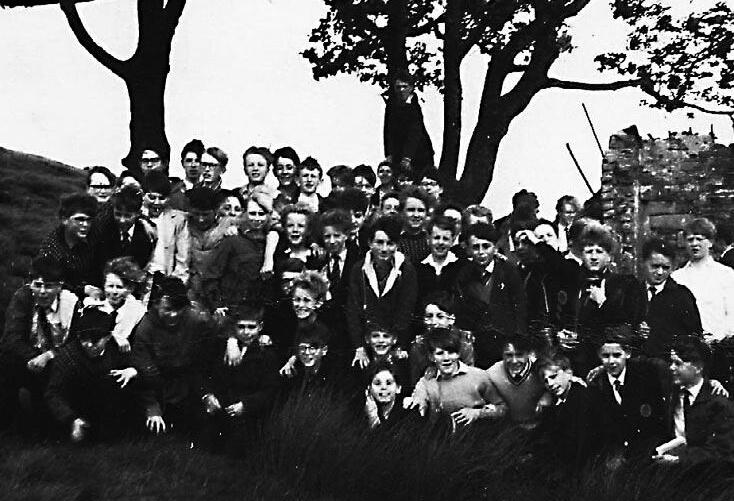
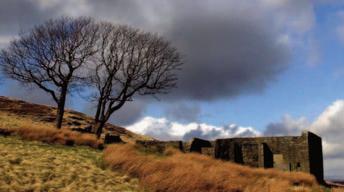
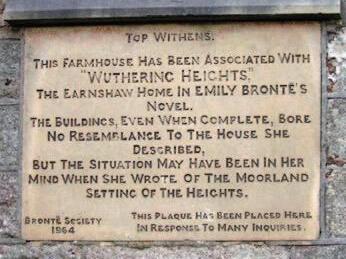
THIS photograph was taken on the occasion of a visit by party of third-formers to Haworth and Brontëland on 11th June, 1964. It was organised by English masters Frank Anderson and Peter Bacon.
The location is Top Withens, a ruined farmhouse near Haworth. A plaque placed by the Bronte Society confirms the widely held belief that this was the setting Emily Brontë had in mind when she wrote her only novel Wuthering Heights, published in 1847 under the pen-name Ellis Bell.
The farmhouse is believed to date back to the second half of the 16th century. At the time of the Brontës, it was inhabited by Jonas Sunderland and his wife Ann Crabtree (from 1811) and then their son, Jonas, with Mary Feather (from 1833). Emily and her sisters would have been well aware of the farmhouse, which in its day would have been regarded as a very notable dwelling. In 1893, it was struck by lightning during a thunderstorm and badly damaged. The last occupant was Ernest Roddy but in 1926 it fell into ruin. Nowadays it has become a regular pilgrimage for Brontë enthusists from all over the world.
Sadly our picture carries no caption. Can you help us to identify the pupils shown?
The founder of the UK’s last remaining fireworks manufacturer Kimbolton fireworks reviews a newly published book on the History of Fireworks.

neWs of a new History of Fireworks, published last august made me curious since the author, John
Withington, is not well-
known in the fireworks industry. The church house, Westminster, quickly sup-
plied me with a copy of the book, and this led to further surprises.
i lived in huddersfield before going to
durham university in 1960 and occa-
sionally i would hop on the train on a suitable saturday to go and watch brock’s
wonderful displays at belle Vue. on that
specially constructed site with many
convenient facilities it usually ended
with a waterfall the length of the site, with a loud bang and every waterfall
stick doing its job without fault. i used to wonder how they achieved this, a perfectly straight line, and electric igniter for every waterfall stick! but now that Mr Withington mentions he is a Man-
chester man, he may have been at a brock display at the same time as l was -
to see brock’s work at its best.
reading roughly the first hundred or
so pages, my impression is that Mr Withington sees the development of the ‘art’ of fireworks as part of the entertainment industry. by the seventeenth century, performances in the well-visited pleasure gardens around london featured various characters who used some form of blackpowder to extend their performance with unfortunate consequences. historical accounts always have their problems in producing factual reports, and those who were also involved at the time often had a different impression by 1695, the
british government had set up a lab-
oratory at Woolwich to make fireworks
and ammunition, which at least was a
start, with a military man in charge, but
also working with the firework industry both here and in france and italy. by 1800 the french were extending
interest in colour in fireworks and there
was a phase of the creation of new pleas-
ure gardens. The brock family became
more involved in the crystal Palace when
the Palace was moved from hyde Park
to the new site at sydenham.
at this stage Withington seems to
RON LANCASTER developed his interest in pyrotechnics in his schooldays, inspired by the Chemistry lessons of Dr Thomas Calloway. Ron’s father was a maintenance engineer in the Almondbury factory of George Jarmain, who played a major role in the early teaching of Chemistry at King James’s.A former Chaplain and Chemistry master of Kimbolton School in Cambridgeshire, he set up Kimbolton Fireworks in 1964. Kimbolton Fireworks ceased trading in 2019.
relegate Pain’s Fireworks (a long-established company dating back to the 1600s)
to the Wells family but does admit that Pain’ s had allegedly sold blackpowder
to guy fawkes. What we definitely know is that Pain’ s concentrated their overseas
development in the united states where
they built new factories. otherwise their main base was in south london where
they were the only people in the uK making multi-break cylinder shells of great quality after former associations with italy. The factory in Mitcham moved
to salisbury but some of the special shells moved to the new Kimbolton factory.
a nephew of William Pain, Joseph
Wells1 , set up Wells Fireworks in 1837.
The firm had the best reputation for quality and good relations with its
clients. in fact, as John bennett would
agree, it was one of the top three companies along with Pain’s and Brock’s.
however. in time, Pain’s began to rival
brock for the crystal Palace business.
The most important book in my collec-

tion is The Rise and Progress of the British Explosives Industry2 - the result of the committee of the explosives section of the seventh lnternational congress of applied chemistry held on 5th december 1908, and mentioned by John bennett in Fireworks issue 85. it provides detailed information for each company, e g brock’s closure of its sites at n0rwood and harold Wood and the company’s move to the new site at sutton in 1907. it is also interesting to see how many companies had obtained licences at about this time e g Crane’s of Bristol in i887, A Jessop 1876, B Jessop 1898, Riley l876, Shaw 1876, Wells 1837 and Wilder 1834.
We must ask where the manufacturing knowledge came from as i lived as a boy within a mile or so from many of them. for the original owners were not inorganic chemists but dealers in blackpowder which was used for shot firing in the local mines and was delivered by rail in the valley below.
before moving to Kimbolton in 1963.
A HISTORY OF FIREWORKS from their origins to the present day John Withington Reaktion Books Published: 1 August 2024
ISBN 978-1789-149357
245 mm x 15 mm
336 pages
71 illustrations, 24 in colour Hardback
£25
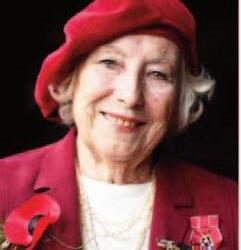

Dame Vera Lynn (inset) pressed the button to launch Kimbolton Fireworks’ 30 minute display to mark 50 years since the end of World War 2 in 1995.
i worked in harrogate and was fortunate
to know another Yorkshire chemist who
had worked with the chemical manu-
facturers at low Moor near bradford
but now worked for Brock’s. ron hall
was an expert in polymerising resins in relation to military applications but an
attempt to use it in fireworks was not a
success and eventually came to an end.
The public warmed to the old fashioned
look of the product.
The new Kimbolton firework factory
was licensed on 18th september 1998 to
replace the old workshops which were in a walled garden on the edge of Kim-
bolton school. and within walking dis-
tance of it. The eventual factory had explosive quantities worked out with dr
Jim Jeacock of the explosives inspectorate - but it was not in my back garden
as Mr Withington suggests. dr Tom
smith joined us in 1989 as display Man-
ager after working in industry for a year
after being at oxford. it seemed that a culmination of Kimbolton Fireworks history was that, by 18th august 1995, after providing displays for hundreds of events, people. universities and schools, we were asked to provide a display to celebrate 50 years since the end of the war. The contract, only awarded four months prior to the display, was to provide five barges firing displays of thirty minutes duration between the
Tower and Westminster — a distance of two miles and four miles of river bank. i hesitate to estimate how many
spectators there were. also, between the barges. were five barges of loudspeakers providing appropriate music
such as the inevitable choice of The Dambusters March, White Cliffs of Dover and We’ll meet again. a small group of us gathered for the start of the show on a balcony of the Tower: Prime Minister, John Major (our MP), lord cranbome and dame Vera lynn (who was to press the button twice!). school children had been competing to design a roundel of the occasion — this was hanging on the Tower wall and was to be ignited
first. dame Vera had her back to the wall and jumped with surprise as the quickmatch ignited the lancework. need-
less to say she quickly recovered to
press the button to start the display on
time.
at the age of 61 i still had the capacity
to produce a large display of fireworks.
but the real leader of the event was dr
Tom smith (our display Manager) al-
though many friends also helped us.
This was a time when communications
were nothing like they might be today.
Difficulty: medium
each row, column
and 3 x 3 box
must contain the
digits 1 to 9
our financial supporters were the Ministry of defence - and my son captain Mark lancaster dealt with them as well as looking after the barge nearest to the thatched shakespeare theatre The Globe! brock’s certainly did displays on the Thames after the war with about 5,000 kilos, but Kimbolton used about 18,000 nec, 50 km of firing wire, 1,025 candle frames, 1,490 crates of mortars and at least five brand new paper tubes to go in each of them. consider the time it took to make those crates — and 1.300 hours of rigging was necessary. 1James Pain's eldest daughter. Ann Elizabeth. married Mortrarn’s son. another Zacharia. Their daughter, Elizabeth. married Joseph's son, Joseph (junior) and it was he who started the firework company Joseph Wells and Sons.
2E. A. Brayley Hodgetts (Editor). The Rise and Progress of the British Explosives Industry, Whittaker & Co.. London, 1909.
Entries to the Editor (address/email: back cover) by 31st May 2025. Prize: 12 months’ free ASOC membership

ACROSS
8. Swimmer come back to Spanish red. (10)
9. Follower of Luke? (4)
11. Rutherford, for example, loses electron. (5)
12. Denounce in chaotic term. (9)
13. Bird with Scottish name. (6)
14. Mad Michael the fifth. (8)
17. Store it haphazardly. (7)
20. Pal shields confused little sister. (7)
22. Chap with agent at sea. (8)
23. One replaces king in cave. (6)
27. 5 laze about that Spanish axis. (9)
29. In retrospect, herb on delicious starter. (5)
30. Little Reginald has nothing on. (4)
31. Little cob I trained. (10)
1. Attending game, or witness. (8)
2. Free international organisation, with 1000 not attached. (6)
3. Shakespeare’s advocate from Venice, maybe, in attendance initially. (6)
l The winner of crossword by hérisson (november 2024) was Peter Tracey (1956-63)

4. Drink, missing quiet start, gains quiet start for drink! (5)
5. It’s on the agenda, I remove top from stalk. (4)
6. Deranged 16 eats extremities! (3-5)
7. Steal points at church. (6)
10. Align East. (5)
15. Force Mary out. (4)
16. Beast number 49 rising. (4)
18. Chinese studies evil with nothing to record at day’s end. (8)
19. Unlucky for some in Paris. (6)
21. Cities go awry, becoming selfcentred. (8)
22. Proposers who can’t keep still. (6)
24. Point losing a drug charge. (6)
25. Switch fastener. (6)
26. Shiraz otherwise holds panacea. (5)
28. DuPont stripped, but on top. (4)
Wind blowing up from the leeds road by-product works
numb-fingered flag-sellers in crowded shop-doorways lurk.
squad-cars outside Scamps in november haze.
salvation army in christmas eve praise.
holidays at home by the greenhead Park bandstand
christmas time cribs in the Market Place grand.
late night vain searches in taxi-less ranks.
Woodbine men smoke on the sixty-one bus route
howarths on saturdays tout off the fruit.
last ’buses that don’t come, stirring up anger
saturday shoppers frequent the Piazza.
cloth-caps that drift by to watch ‘good old Town‘
steps (civic centre), so hard to walk down.
‘socialist Worker‘ on sale in the Market hall
ring-road, and ring-road, and no space at all
all-year-round demo men ripping out shops
”right-change”-less women at cold rainy ’bus stops
but all this will change with the passing of time
You ’ll change, huddersfield, you ’ll be no longer mine.
city of tomorrow, i’d much rather you stay
This beautiful, old-fashioned town of today. a J donkersley, Tr. arts
IT is not surprising that Andrew Donkersley was in reminiscent mood when he composed this poem which appeared in The Almondburian in Summer Term 1973. The late 1960s and early 1970s were years that saw the demolition of many cherished old buildings in the town, some as a result of the construction of the controversial inner ring road.
Andy Donkersley attended King James’s Grammar School from 1967-73, leaving to study at the School of Journalism at Cardiff College of Commerce. He joined the Express and Star newspaper in Wolverhampton in 1985 after working for the Blackpool Gazette. After a brief spell with the Derby Evening Telegraph, he rejoined the Express and Star where he worked for two decades, covering the city's busy crown court. He later joined the Express and Star's sister weekly, the Wolverhampton Chronicle, before leaving the company in January 2006. Andy’s premature death in Shafnal at the age of only 52 on 5th November, 2008 was a shock to his many colleagues and friends. l Overleaf: some of the many buildings that were demolished in the modernisation programme.

ManY cherished huddersfield buildings disappeared as a result of the major redevelopment of the town centre in the late 1960s. former almondburian CLIFFORD STEPHENSON, a pupil of King James ’ s grammar school from 1914, was much involved in these changes, having served on the huddersfield council for 19 years; he subsequently became chairman of the central area redevelopment committee. for record purposes, he photographed many buildings before they were demolished.
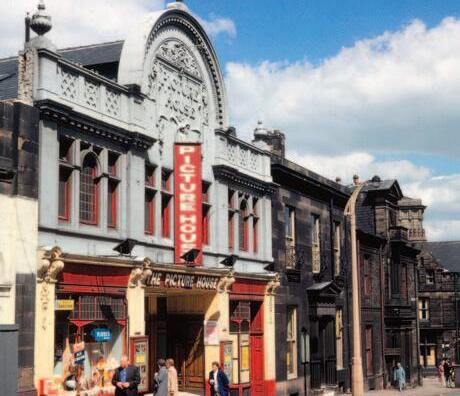

. The Picture House cinema, one of over 20 in the town in the 1960s, was Huddersfield’s first purpose-built cinema in 1912. It closed in 1967.
2. Next door was the Theatre Royal, built in the 1830s and rebuilt after a fire in 1881 with a seating capacity of 1,250. The painting over the proscenium arch depicted a fairground scene.
3. Regarded by many as the town’s finest tool shops, McKitrick Bros was located on Buxton Road. 2 1 3

4. Shambles Lane, alongside the Market Hall, is best remembered for its greengrocers’ stalls.
5. The demolition men move in to demolish Huddersfield historic gothic-style Market Hall in 1970. There are many who still lament its disappearance.
6. Cross Church Street has largely survived but the soot-covered buildings have received a welcome clean-up in more recent years.
7. The West Riding Pub and adjacent John William Street disappeared when the new ring road was built. The former Curzon Cinema opened as the Picturedrome in 1910 and closed in 1967.
8. This view of Ramsden Street shows the Theatre Royal and Picture House in the distance. The entrance to Ramsden Street Baths, built in 1879, is in the foreground.
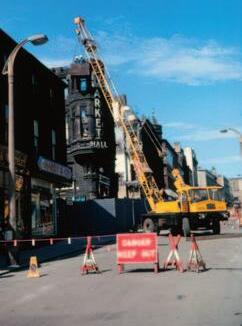


5 6 7 8


most town centres in the uK, huddersfield is going through a bad patch. arguably, it started as long ago as 2009 with the closure of Woolworth’s in new sreet. Marks & Spencer’s, its neighbour a few doors away, closed to general dismay in 2019. at the buxton road end of new street, one of the biggest Wilko stores in the country went out of business in 2023 and W H Smith ceased trading last year. There are very few big names left. but all is not doom and gloom as plans to revitalise the town centre move into top gear. Kirklees council’ s ‘huddersfield blueprint’ has identified five key themes over the coming 10 years l better access l enhanced public spaces l Making huddersfield ‘a great place to live’ l a vibrant culture l Thriving businesses. These are just a few of the many projects either approved or being planned:


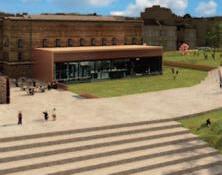
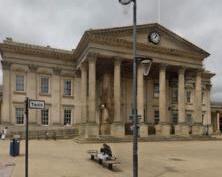

1. The George Hotel, closed since 2013, is due to re-open as a Radisson hotel, though that may not be until 2027.
2. There are major plans to modernise the iconic Railway Station as part of a multibillion-pound Transpennine Route Upgrade.
3. Plans are being prepared to convert the former Public Library into a new Museum, Art Gallery and cafe with terrace.
4. The council plans to demolish the Piazza Centre and create a new events/live music venue and food hall.

5. A large open area will be opened up behind the Museum and Art Gallery to form a ‘Town Park’ for open air events for up to 3,000 people.
6. Plans are being developed to amalgamate Huddersfield’s two markets (the Queensgate Market and the Open Market) into a renovated Open Market Hall site. 1 2 3 4 5 6
Roger Sykes (1946-1953) revisits some of his favourite drawings
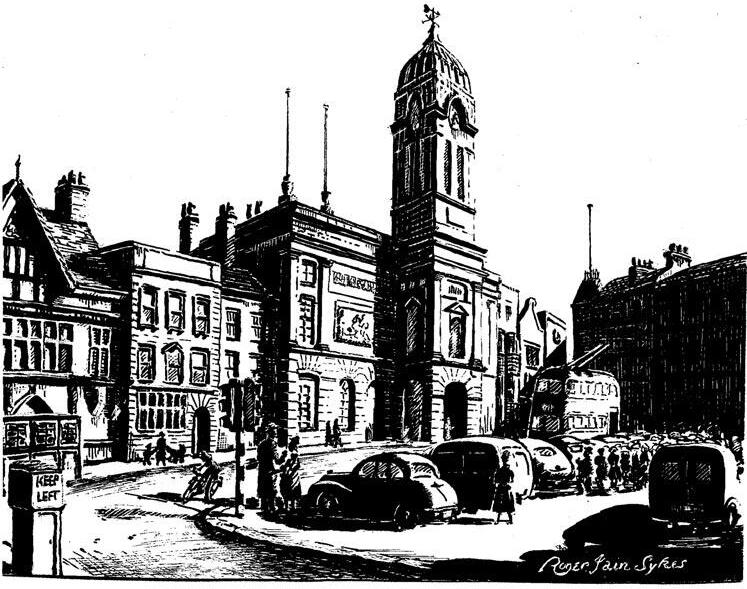
FROM my school days, I sketched churches and old buildings in the local district and I now feel like a Guide Book! And why not, as this month’s sketch is from Derbyshire which I toured whilst a student on a placement with Rolls Royce.
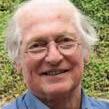
The whole setting of the Derby Guildhall is a very ordinary view - home to parked cars, vans and road signs and deserving of the inclusion of a trolleybus! However, Derby was home to many old buildings of character which I also sketched, like St Michael’s Lane and churches such as St Alkmund’s, recorded before being pulled down!
Being a county town with the central River Derwent, public parks and the nearby Peak District, there are many attractions such as the magnificent cathedral and the Oxford Radcliffe Library. Famous people include John Flamsteed, the first Astronomer Royal. St. Mary’s Bridge was built to cross the River Derwent – it has one of England's six remaining medieval bridge chapels.
I have to say that the present-day photograph of the Guildhall shows a clean and tidy open area. An improvement on the sketch? Or just bland and boring?

‘Food, glorious food!’ According to reports, the obesity rate in the USA is around 40 % and we in the UK, at 2 6% , are not that much better. What better time for our man in the States to tuck into a few hearty observations?

WelcoMe to 2025! (You’re
welcome to it, mate.) i
hope everyone enjoyed a festive noelmas and new
Year. clearly, holiday gatherings present the greatest temptation for dietary overindulgence. The recent rise in basic food prices put a
damper on the merriment in many households, but in the early ’80s when i
first made landfall in the united states it
was still considered The land of Plenty,
more or less, and this Tyke ’ s tum was un-
prepared for the cornucopia of delights
in store.
it’s old news that chicken
Tikka Marsala has evolved to
be britain’ s most popular dish. indian food is also
readily available in my adopted homeland, and although curries of the veggie
variety now constitute my favourite takeaway fare, a generous portion of vinegary chips doused with a steaming slurry of mushy peas was always the best comfort nosh for this sad nostalgist. in view of liquified, fluorescent green marrowfats being hard to find outside of overpriced import shops i’ve
been forced to swallow my disappoint-
ment and adapt. bring it on, Yanks.
not counting the bland cardboard ra-
tions served up by Panam airlines on my maiden transatlantic flight, my first
authentically american epicurean ex-
perience took place at the golden dawn
diner in hamilton Township, new Jersey.
hailing from a land where cafés charged
for beverages by the cup, imagine a
thrifty herbivore ’ s delight upon en-
countering a fixed-price all-you-can-eat
salad bar and unlimited free refills of cof-
fee and iced tea. i naively assumed these
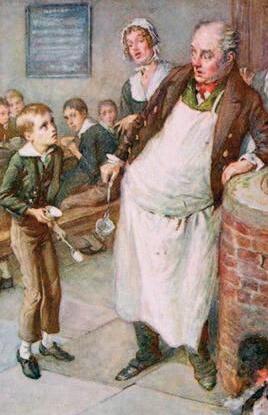
“I want some more” is the mantra of many Americans today. Some 42.87 are clinically obese.
extravagant eatery innovations to be ameri-
can in origin, but no!
The smörgåsbord concept of a help-yourself
tabletop spread can be traced back to 16th
century scandinavia although, typically, the french credited this
tradition (‘service à la français’) to their King
louis XiV and re-
christened it a ‘buffet’
after the sideboard on which the food would usually be served. anyway, the idea was officially introduced to
americans at the 1939 new York World’ s fair swedish pavilion. food bars were
eagerly embraced by 1940s las Vegas casino owners to encourage their patrons’ round-the-clock gambling, and the concept was soon popularised by cruise ship companies and restaurant chains.
owing to a certain amount of pandemic-induced caution i’ve carefully avoided indoor dining for the past few years but buffet-style foraging does present potential health hazards. The only physical barrier separating hordes of virus-shedding customers from openly displayed foodstuffs is the allpurpose plexiglass ‘sneeze guard’, an al-
legedly protective, transparent acrylic
shield suspended above the array of stainless steel tureens. depending upon a person ’ s height, this polyacrylate cover is guaranteed to either scrape your
knuckles or whack you in the nose as you lunge forward to fill your plate. but it’s
really children, those diminutive, crusty-
fingered, disgustingly efficient plague transmitters, prone to willfully discharg-
ing the contents of their sinuses without
warning, who present the greatest safety threat at these familyfriendly counters. also, as
i can attest, not every cus-
tomer – or even kitchen staffer – washes their
hands thoroughly, if at all, after using the loo. (our
squeamish american cousins are often inclined to euphemistically substi-
tute the words restroom, bathroom, powder room,
john, can, oval office, thunder box, or al-
most any other descriptor to avoid uttering that smutty epithet ‘toilet’.)
as if adults and their offspring don’t
pose enough of a health risk, the food presentation itself can be problematic. heat lamps tend to dry out pre-cooked
items, and after sitting out for a couple of hours fish, meats, and dairy products
can cultivate the perfect petri dish en-
vironment for pathogens like e.coli, sal-
monella, or staphylococcal bacteria.
even innocent-looking salad greens are
a potential breeding ground for listeria
and even hepatitis a. negative publicity
arising from several tragic food poisoning outbreaks impacted formerly-popu-
lar u.s. restaurant chains such as golden
corral, sizzler, Jack-in-the-box, old
country buffet and fresh choice which
had flourished from mid-1970s onwards, leading to business closures, criminal in-
vestigations, and an understandable slump in buffet patronage. a 1992 simpsons episode ‘The new
Kid on the block’ portrayed homer bankrupting a springfield seafood restaurant
after taking its “all-you-can-eat” ad lit-
erally. in a case of life imitating art, last


year the national seafood chain red
lobster filed for bankruptcy, citing
losses partially attributed to its unsus-
tainably generous $20 ‘ultimate endless
shrimp’ promotion. (in actuality the story’s a lot more complicated, involving
fluctuating market prices, greedy private equity firms, and failed ‘restructuring’ attempts, leaving america’s largest seafood chain floundering with $300 million in debt.)
another distressing downside of these establishments is their resulting
wastefulness. bringing home leftovers is discouraged and takeaway packaging doesn’t come cheap either so mountains of uneaten food get thrown away. That’s a shameful practice in a society where thousands go hungry each day, and a sad commentary on our disposable culture.
When dickens’ famished fictional
scrounger oliver whined to Mr bumble
“Please sir, i want some more”, never in his wildest dreams could the lad have
imagined a culture of such excess. in an equally ironic ‘twist’, there ’ s now a pill
that actually suppresses the urge to eat.
There are plenty of people out there suffering from medical issues that make weight control difficult. on the other hand, serial overeaters who vainly struggle to practise restraint can thank
lotte Knudsen, a research scientist at the dutch pharmaceutical firm novo
nordisk, whose breakthrough diabetes research led to the much-hyped obesity drug ozempic. i wonder what restaurateurs think of that.
The news isn’t all bad for budding gourmands. for example, located in Pennsylvania’s lancaster county – a
rural amish region synonymous with embarrassing town names like intercourse, fertility, blue ball, and so forth –is the semi-legendary shady Maple
smorgasbord. Proudly advertised as ‘america’s largest diner’, shady Maple opened its doors in 1985 and continues to thrive against the odds, serving up freshly-made homestyle food to around
7,000 hungry visitors daily (except sun-
days) where breakfast costs only $16 and
dinners start at $23.99. incidentally, there you can sample ‘scrapple’, a deep-
fried spam-like regional delicacy con-
sisting of hog scraps and other
discarded animal parts churned to-
gether with cornmeal. Who could resist?
Meanwhile, in nevada, two thousand-
and-a-bit miles to the west, is las Vegas, the world-famous gambling mecca re-
plete with casinos boasting their own mega-buffets. sin
city’s biggest by far is the bacchanal buffet in the
caesar’s Palace hotel & casino, where unlimited
victuals will set you back a
princely $89 to eat yourself into a food coma.
in the slightly more fru-
gal united Kingdom where
patrons of indian and chinese restaurants have long
been familiar with buffet-
style lunchtime grazing
some adventurous entre

preneurs have been inspired to follow
america’s over-the-top example. Tay-
barns was, for a time, a northern low-
cost face-stuffing chain owned by
Whitbread, and today the Wetherspoon
pub empire owns several spoon World
buffet locations in the south. cosmo
World buffets, “inspired by the best five-
star hotels in the world”, boasts branches
from aberdeen to bristol, and the Jrc
global buffet chain’ s signature restaur-
ant in Watford claims to be one of eu-
rope ’ s largest. also in Watford you ’ll find
the grove hotel’ s glasshouse restaurant, one of the most expensive high end all-
you-can-devour experiences in the uK, charging from £65 to £82 (plus service)
on weekends. There ’ s also za za bazaar
in bristol, and The ned in london, located in a former bank within sight of st
Paul’ s which hosts one of the swankiest
sunday brunches of all at £100 per per-
son.
still, if you ’d prefer to ratchet your
dining experience up a euronotch and
don’t mind waiting a couple of months for a reservation you could plan a gallic
trek to norbonne in the south of france, home to an upscale joint called les grands buffets. boasting four themed dining rooms and “the largest selection of cheeses in the world” its bounty includes all the snails, frogs’ legs, and foie gras a person can consume, a steal at €57.90. (double Jeroboams of Krug grande cuvée not included). not altogether my thing, frankly, although if i was left alone with the fontaine de chocolat noir i’m not certain i could refuse. all of this brings to mind the ’70s french film La Grande Bouffe wherein a group of jaded gastronomes ensconce themselves in a country house and eat themselves to death, a possible ‘sauce’ of inspiration for the infamous scene in Monty Python ’ s Meaning of life where the gluttonous Mr. creosote literally explodes after tasting a final palate-cleansing “whaffer theen mint”.
bon appetit.
beYond T h e c l a ss r ooM
The Year 11 netball team
won the Kirklees league
fighting off strong
competition in the
final against shelley and
honley. Their success is the
culmination of hard work and
effort over the past five years.

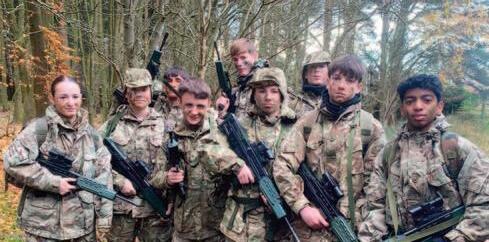
oracy is the ability to
express oneself
fluently and
grammatically in speech. 50
students in Year 9 took part in
a full-day ‘oracy workshop’to
help them to develop their
communication skills and
confidence.
nine Year 10 students have
attended a four-
day residential Work
experience placement
with the british army at Queen elizabeth barracks in York, learning basic military skills. ‘
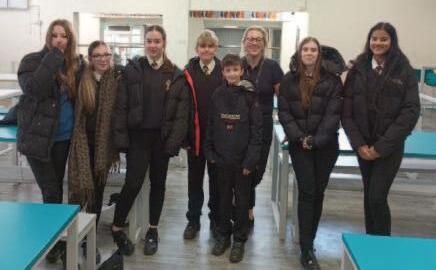
The King James ’ s
chess
championship
returned in the autumn
term, with competitors
from several
year groups. The final
was a hard-fought
contest between brothers
Manav and aryan Patel; the older brother Manav
eventually taking a 2 – 1
victory. isaac fossey, was
a gallant third.
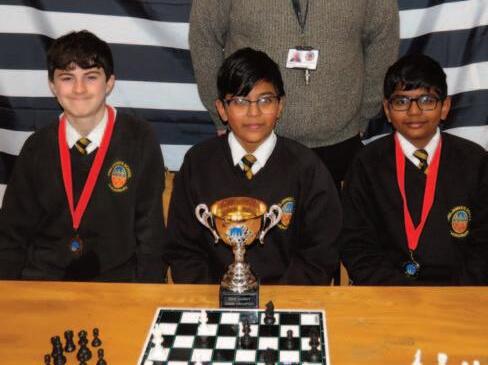
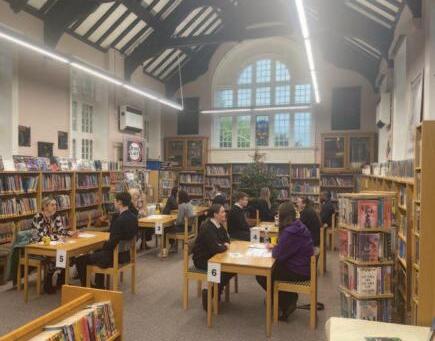
Mock interviews took
place last december
with nearly 30
participating organisations including the department for Work & Pensions, greenhead college, huddersfield new college, Kirklees college, Kirklees council, Purple dog ltd, stafflex, The link, Transpennine route upgrade and Westin drives.
l KJs plans to launch Accelerated Reader (AR), a digital whole-class reading
management and monitoring programme to foster independent reading.
l The school has achieved the Quality in Careers Standard, a national quality award for careers education, information, advice and guidance in secondary schools.
KJS produces a lively full-colour Newsletter each term. If you would like an email copy please contact Tracy Sykes (Reprographics): Staff.TSykes@kingjames.school.
flig h T
The almondburian seeks the help of gliding enthusiast David Slocombe (1965-1971) in understanding the mystery of Flight.

We’ve all been there. Maxi-
mum load 22 kg, it says
on the flight ticket. You
check your suitcase and
find it weighs 23 kg, so you
reluctantly remove a couple of heavy
sweaters you packed earlier (surely it won’t be cold in midsummer in Tenerife?).
Job done. except that it still seems to weigh a ton, and not for the first time, you marvel at the wonder of flight – not just the unlikely proposition of elevating yourself and your luggage to 24,000 ft but sim-
ultaneously performing the same won-
drous feat on 200 fellow-minded pas-
sengers, all with similarly bulging suit-
cases.
despite the mounting evidence to the
contrary, my wife has never really be-
lieved that flying can actually be possible
and regards the high point of any flight
as that moment, at the end, when she
can return safely to terra firma. sadly, i
cannot claim that my own greater level
of confidence is due to my education at
King James ’ s grammar school (though
there was an active air Training corps

Ready for take-off: David Slocombe is at the controls while Roger Dowling feigns confidence behind.

(aTc) and i guess those members must
have picked up a few hints and tips as
part of their training under ‘dusty’
binns). but i know enough to understand
that it’s really all about the cleverly
shaped aircraft wings that generate what is known as ‘lift’. as long as the
aircraft goes fast enough to ensure that the lift exceeds the weight of the aircraft
and its load, the plane is going to become
airborne whether it likes it or not. it’s a thought that has comforted me mightily over the years. clearly those big engines must help. a pair of modern jet engines can apparently generate a thrust of about 15,000 horse-
power, so with 200 passengers that’s 75 horses apiece. but my wife has never understood how even 75 horses could
keep her airborne at 24,000 ft for hours on end, and i think she probably has a
fair point. and what about gliding? readers may
recall that almondburian david slocombe wrote about gliding in our July 2023
issue and claimed that he could stay aloft
in his glider for several hours with no more than a few puffs of air under the wings. Magic indeed! so when he kindly offered me a glider trip last october, i
felt duty bound to accept the offer on behalf of The Almondburian and report back
on my experience.
so, a bright morning last october found
me on the road to burn gliding club
near selby, north Yorkshire, one of around
80 such clubs in the uK. gliding has
been a popular pastime since the 1920s
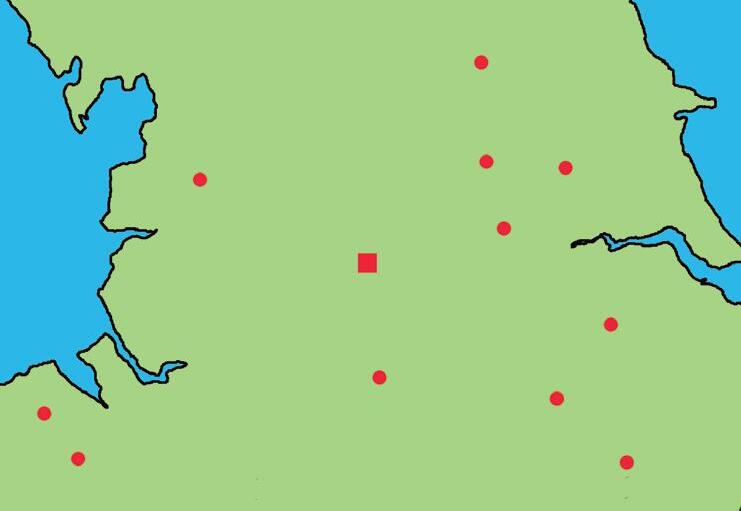
Burn Flying Club is 40 miles from Huddersfield. There are numerous others within easy reach of the town.

though germany has always been the
centre of the gliding world. after World
War 1, flying restrictions imposed by the
Treaty of Versailles on the manufacture
of powered aircraft in germany resulted
in the german government encouraging
firms to develop innovative glider designs.
Today, leading manufacturers such as alexander schleicher, lange aviation and schempp-hirth flugzeug-Vertriebs
are all germany-based. i arrived at the airfield at around 9.30
am, with not a cloud in the sky. “a great day for flying,” i said cheerily to david
who was standing outside the clubhouse
to greet me. it was my first mistake of the day. “for flying perhaps, but not for gliding!” david corrected me. “We need to have plenty of clouds to give us lift, so i reckon we should wait for a couple of hours or so to let the clouds build up.”
so we had plenty of time for david to
show me round and tell me more about the club. The airfield is rented from north Yorkshire county council, though the club owns the main hangar and clubhouse. it was originally a World War 2 airfield, first opened in 1942 as a base for no 431 squadron of the royal canadian air force, part of 4 group raf bomber command. Various other squad-
Simple instrumentation: the two top dials show air speed in knots and rate of ascent/descent in ft/min. The lower dial indicates altitude.
rons used the airfield before it closed in 1945.
“We have 110 members,” david told me, “of which
72 are active pilots.”
The club has around
30 gliders on site, some owned privately
and others by syndicates. its own fleet includes:
l two glass fibre schleicher asK21 two-
seat training gliders, the workhorses of the club’ s pilot training programmes;
l a glass fibre Polish szd-51-1 ‘Junior’
single-seat glider;
l a carbon fibre/glass fibre schempphirth Janus c/f two-seat training glider, used for more advanced solo pilot training in the use of flaps;
l a schleicher asK13 two-seat training glider with a steel tube framed fuselage
and fabric covered wooden wings which has been part of the training fleet for
over 50 years but is still in regular use. The club also has two tug aircraft and
a motor-glider for use on non-gliding days. by the time we had finished our tour
and broken for coffee it was time for the pre-flight noTaM (notice to airmen)
announcement from instructor alistair
MacKenzie. “no great problems today”
he reported. “The paragliding crowd
have just moved. There ’ s a military ex-
ercise going on to the north-west of
leeming with loads of helicopters but
that shouldn’t worry us. so no great ha-
zards to report.”
so as noon approaches, david decides
it’s time for action. “let’s get you sorted
out with a parachute!” Pardon? for a
moment, i wondered anxiously if david
had misunderstood the true purpose of my visit and had booked me in for a
jumping session but he assured me that it makes good sense to wear a parachute when gliding: although there ’ s no engine
to go wrong, there ’ s also no engine to get
you out of trouble if
other problems were
to arise. suitably
kitted out, i made my way to asK21 derh, got myself
strapped in and we
were soon ready to go. although burn
flying club has
think that even my wife would have been impressed that all this was being achieved without the help of any horses at all. Visibility was excellent and it had turned out to be a good day for gliding after all: looking down, i could easily see such landmarks as the remains of the now-abandoned eggborough Power station to the south and the drax Power

winch launching facilities, on this oc-
casion it was to be an aerotowed launch
using a tug aircraft, a Pa-25 'Pawnee',
and in no time at all we were airborne.
it’s difficult to put the experience of gliding into words, except to say that it
must surely be the closest man can ever
be to emulating birds. The absence of an engine means that it’s pleasantly quiet – even wind noise is largely eliminated by the overhead canopy – and
the most intrusive sound was the insistent beeping of the electronic audio
variometer which generated a rapid high-pitched beep to indicate a rise in
altitude and a more mournful lowerpitched beep indicating a descent. i had expected that the experience would be similar to acending and descending in a lift, but this was not the case and i
station to the east. To the north, York
Minster soon came into view. Throughout the flight i was conscious that david was keeping a constant eye on the clouds above that were a reliable indication of the presence of the thermals
– rising currents of air – that were vital
to gain altitude. david told me that his maximum time airborne in a single flight, so far, is 5 hours 35 minutes. on this occasion, i felt truly saddened when my little demonstration fight had to come to an end after about half an hour. it had been a wonderful experience for which i would like to extend my gratitude both to david and to his colleagues at burn
flying club.
in his article in July 2023, david asked:
‘Why not an almondburians’ gliding
section?’. With numerous gliding clubs
within easy reach of huddersfield – not to mention the 80 gliding clubs, 2,300
gliders and nearly 10,000 members
dotted around the rest of the uK – it’s
a very fair question.

10th oct
We also m
to Presen
decembe
ton badm
other half
to play lea
matches a
sally star
ganged
spectator
us to mak
The mos
The 2024-25 badminton
season got underway on 12th september with six
ANDREW HAIGH
mas, due firstly to snow and then to exams. We could do with a few more regular one. We rts hall ening dur-
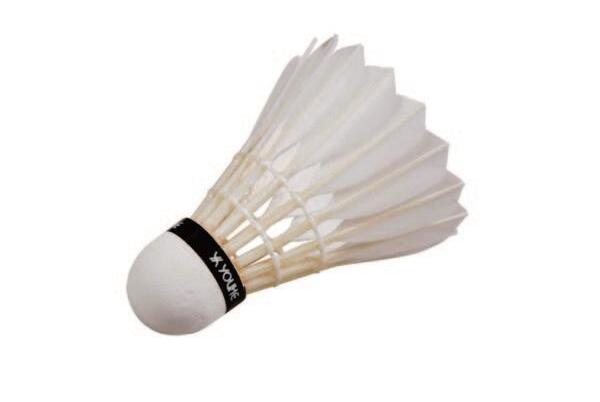
played on one evening wa
seven, on 5th december.
That week, ironically, we
were down to just one
court, due to torrential rain causing flooding at one end of the sports hall.
We had a few evenings
with six people playing, in
cluding the last badmin
before christmas on 19th d

cember, when we traditionally have a christmas party afterwards.
There was another slow start in the
new year since it was 30th January before
badminton recommenced after christ-
om 7:30 9:00 p.m. The e hire of ha ll , a nd
£7.00 per vening. e to alr refreshured on ar this sea-
son are: ian daffern, andrew haigh, robin Mer-
chant, david Parry, Joe sch ewt s ch u ck, sa lly star bu ck a nd c ra ig
Watts. Why not come and join us?
due to the constraints of the gcse exam timeble, this year’s badminton son will finish on Thursday, 3rd april. after then, we play tennis at longley community sports club on
Thursday evenings from 7 p.m. onwards. again, all are welcome. There is a guest fee of £3 for non-members.
sPo r T
ROBIN MERCHANT
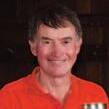
The gothard cup 2025
competition will take
place at its traditional
venue of Woodsome hall,
on sunday 29th
June with the 1st tee re-
served from 2.30pm.
as always, the golf will
be followed by a meal and
the presentation of prizes.
This will be the 80th
time the gothard cup will
have been contested, dating
for example during the second World
War and then again during the 1990’s and it is due to the great effort of simon
russell that the competition was re-

back to 1932 when Mr. J Priestley
was triumphant. There have been a few
years when the cup was not contested,

ved! it is up to the society
members to make sure this
competition keeps going and
to ensure that it can cel-
ebrate its centenary in 2032!
so, if you would like to
meet up with old school mates
ver a drink or two after a game
of golf or if you would just like to at-
tend the meal, please do come along and
join us.
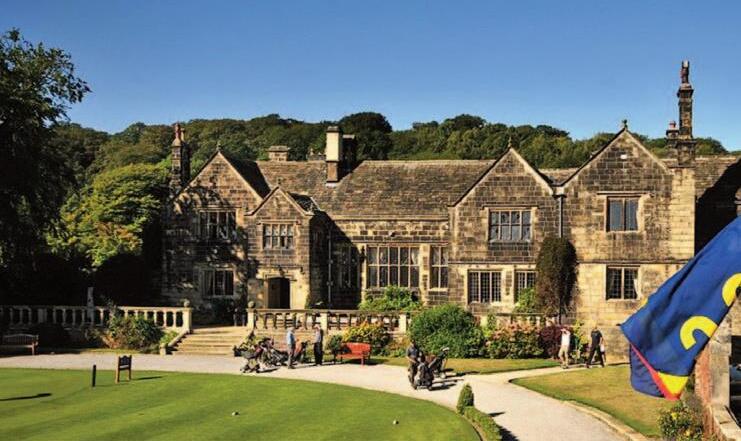
Geologist who became a leading international authority in the field of micro-palaeontology
Prof emeritus JEREMY BRENT WILSON of Maen-y-groes, new Quay, ceredigion died peacefully at home on 24th september after a long battle with cancer. he was the son of Mr. roy Wilson of auchencairn, dumfries and galloway and Mrs. Jeanne hallas of birchencliffe, huddersfield. brent was born on 10th november 1959 in falkirk and in 1961 came with his parents when they returned to huddersfield. his early education started at almondbury infant and Junior school and this was followed at King James ’ s grammar school and greenhead sixth form college. in 1977 he was accepted at aberystwyth university to study for a degree in geology, a subject
he had an interest in from boyhood and one he shared with his father. he received
a b sc (hons) in 1980 and followed this with
a further two years at aberystwyth reading
micro-palaeontology for which he received
an Msc in 1982. intending to pursue this
specialism further he next went to the uni-
versity of saskatchewan but did not find life in the canadian prairies to his liking
and after a year or so he returned to the uK.
after a break from academic studies he decided to offer his services to Vso (Voluntary services overseas) who persuaded him to take up a school teaching post on the small carribean island of nevis. his subjects were to be Maths and Physics, not his speciality, but he was assured by the people at Vso that as he was only required to teach up to o level and that it should not be too difficult for someone of his proven intellect to keep a few steps ahead of his students! The initial posting was for two years at the end of which he was asked to stay for two more. in total he stayed for seven, his work gave him time to explore his new environ-

ment and the opportunity to continue research in his geological interests. he registered with his old university to study as
an external candidate for a Ph d based on
research into the micro-palaeontology of the local marine environment. brent re-
ceived his doctorate in 1999. in 1993 brent attended a conference for science teachers on the island of Montserrat
where he met his future wife Jacqui, also
a science teacher (with a degree in physics!).
They married on nevis in 1994.
in 1998 as brent was finalising his thesis for submission he was head-hunted by a
firm of geological consultants to the petro-
chemical industry based on Trinidad. called
Biostrat, a consultancy was operated by two englishmen who had connections with aberystwyth university. brent accepted the post and he and Jacqui took up resi-
dence on the much larger and busier island.
brent stayed with Biostrat for five years.
in 2003 the university of the West indies
advertised for a lecturer in geology at the st.augustines campus in Trinidad. This
was in the geology department in the
chemical engineering faculty and brent
was appointed to the post. he eventually became the head of the geology department.
a significant part of his remit was re-
search in his specialist field and over the
years he produced many published peer
reviewed papers. in addition to his academic qualifications he was a fellow of the royal
geological society and a research associate of the smithsonian institution of Washington. in 2013 he was elevated to Professor at the university of the West indies.
some 20 years ago at a routine health
examination brent was diagnosed with prostate cancer and began treatment which for some time slowed the development of the cancer. however, by 2017 the treatment he had been receiving in Trinidad had reached the limit of effectiveness and he made the decision to return to the uK taking early retirement from the university. brent and Jacqui had travelled widely but chose Wales to settle.
soon after his arrival there he volunteered
with a local marine environmental interest
group working on the coastline at new
Quay.
brent’s interests outside the world of geology included music and painting. during his time at saskatchewan university
he was required to choose a subject of study unrelated to his main research and he selected music composition; some of his compositions have been performed in Trinidad and more recently in Wales. Painting came late in the last year or so of his life. in september 2023 the treatment he had been receiving was deminishing in its
effectiveness and he was placed in palliative care at his home. in the earlier months he was able to continue with his interests and research, producing a further published paper.
brent led an interesting and rewarding life and career. he made his mark in his
specialised field internationally and will be well remembered by the students he
mentored in their preparation for their degrees and doctorates at the university in Trinidad.
Jeremy Brent Wilson, born 10th November 1969, died 24th September 2024 aged 64.
Keen sportsman who became a leading expert in construction law in the UK
MARK LAWTON attended King
James ’ s as part of the “new com-
prehensive intake’, entering what
was previously “year 3” in 1976 and
leaving after a-levels to study law at nottingham in 1981. Mark was a well liked and really popular pupil throughout his years at King
James ’ s. his favourite teacher, with absolutely no doubt, was robbie field whom he got to know well whilst studying french and german
to a-level. Mark went onto law
school in chester and then returned
to huddersfield to undertake his
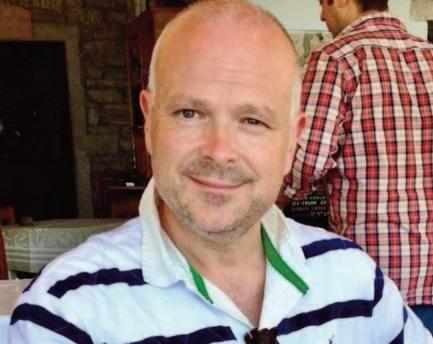
articles before moving onto law firms in
leeds and newcastle, specialising in con-
struction law disputes. he was one of the
uK’s leading experts in construction law [i know this because Mark told me so!]
and had a strong working relationship with many major construction firms.
despite moving away from the area he remained a passionate huddersfield Town
fan. his attention was occasionally taken by the black and white stripes of newcastle united but it was then blue and white
stripes that he watched at old Wembley, The Millennium stadium and new Wembley. he had a passion for rugby union attending many international fixtures and watching his sons, from the touchline, at newcastle’ s northern rugby football club. a member of Woodsome hall golf club whilst at King James ’ s he adored rounds of golf with his sons and made the occasional appearance in the gothard cup.
Married to diane and, although separated and later divorced, they remained good friends and collaboratively brought up their three sons Will, oliver and Max.
Mark’s total pride and joy. aged 45 Mark developed a rare cruel
auto-immune disorder which in itself can cause dementia. by 2017 it was clear he had developed some subtle cognitive impairment and he was subsequently diagnosed with alzheimer’s disease on top of the auto-immune disorder. he continued to live independently until going into full time care at the young age of 57. he died peacefully with his eldest sons Will and oliver beside him, aged 61. a kind, thoughtful, quietly confident absolute gentleman with a quick hilarious sense of humour. along with his three sons he leaves a grandson, freddie.
Mark William Lawton, born 20th May 1963, died 8th November 2024 aged 61. Robin Sharman
Colin Robson KJGS 1946-53
Specialist in behavioural sciences who lived in St Helen’s Gate for most of his married life
COLIN ROBSON, emeritus professor in the school of human and health sciences at the university of huddersfield, has died at the age of 89.
The only child of Mary and raymond robson, he represented the school at chess
and cricket and with a state scholarship, read Physics at the university of Manchester. While studying for the Pgce at Kings college, london, he came across the subject of Psychology for the first time.
national service was still compulsory in the 1950s and colin secured a short service commission with the raf and
spent the three years teaching electronics at no 1 radio school, locking, Weston-
super-Mare.
by now he was the father of Mark and
catherine, having married Pat Wells in 1958 who had been an evacuee in almond-
bury during the war and returned every
august to visit Mr and Mrs lancaster of Kaye lane. While teaching physics at colfe’ s
grammar school in lewisham, south-east
london, he began studying Psychology at birkbeck college london for three evenings
a week. four years later, he gained a first-
class degree and a post as lecturer at the college.
but the pull of the home town was
strong, especially when the new polytechnic
was advertising interesting jobs. in 1971
they needed a head of education and local
lad colin, after five years at birkbeck and
now with a Phd, fitted the bill. When the
poly became a university, colin moved
across to lead the behavioural science de-

partment with a new degree combining
psychology and sociology which proved
highly successful
for thirty-two years, the robsons lived happily at Kirkroyd, 45 st helen's gate. son Mark attended KJgs before going on to greenhead college where Pat taught english, catherine following soon after-
wards from almondbury high school.
in 2003 colin and Pat moved to bath to be nearer the family. in 2019 colin suffered
a severe stroke which left him almost com-
pletely paralysed but with his mental faculties intact. benefitting from excellent live-in carers, he enjoyed life as much as possible, managing to update a fifth edition of his textbook Real World Research. a lifelong supporter of hTfc and all things huddersfield, colin died peacefully on 17th october, survived by Pat, Mark, catherine, five grandchildren and five great-grandchildren. Colin Robson, born 27th July 1935, died 8th November 2024 aged 89. Pat Robson

A History of King James’s Grammar School is the official history of the School covering the period 15471963. The author of this 284 page hardback full of reminiscences and anecdotes was historian and former KJGS pupil Gerald Hinchliffe.
£10
plus P & P


Morning Assembly gives a fascinating and often humorous account of former Headmaster Harry Taylor’s life and includes, in facsimile form, 100 prayers –ancient and modern – which he assembled over the years for use in School assemblies.
£10
plus P & P
An Illustrated History of King James’s School in Almondbury was originally published to mark the 400th anniversary of the Charter in 2008. A full colour hardback recording 400 years of history, packed with illustrations throughout.

£10
plus P & P



No beating about the Bush is the finalyear diary of former deputy head Dave Bush, who retired in 1996. A detailed day-to-day account of life at King James’s School with detailed and often amusing accounts of the ups and downs of school life.
£15
plus P & P
President ian riMMer
King James ’ s school, st helen’ s gate, almondbury hd4 6sg
Tel: 01484 412990
email: staff.irimmer@kingjames.school
chairman
WalTer raleigh
15 Thorpe lane, almondbury hd5 8Ta
Tel: 01484 308452
email: walter.raleigh@asoc.org uk
secretary
andreW haigh
2 arkenley lane, almondbury hd4 6sQ
Tel: 01484 432105
email: andrew.haigh@asoc.org.uk
Treasurer
KeiTh craWshaW
5 benomley drive, almondbury hd5 8lX
Tel: 01484 533658
email: keith.crawshaw@asoc.org.uk
Media editor
roger doWling
orchard house, oughtrington lane, lymm, cheshire Wa13 0rd
Tel: 01925 756390/07815 601447
email: almondburian@asoc.org uk
assistant Media editor
richard Teale
The sycamores, 239 huddersfield road, Thongsbridge, holmfirth hd9 3TT
Tel: 07810 313315.
email: richard.teale@asoc.org.uk
KJs representatives abbigail TerrY
King James ’ s school, st helen’ s gate, almondbury hd4 6sg
Tel: 01484 412990
email: staff.aTerry@kingjames.school
liz aTKinson
King James ’ s school, st helen’ s gate, almondbury hd4 6sg
Tel: 01484 412990
email: staff.eatkinson@kingjames.school

Website: www.asoc.org.uk
The Almondburian is distributed to ASOC members free of charge. Price to non-members: £5.00